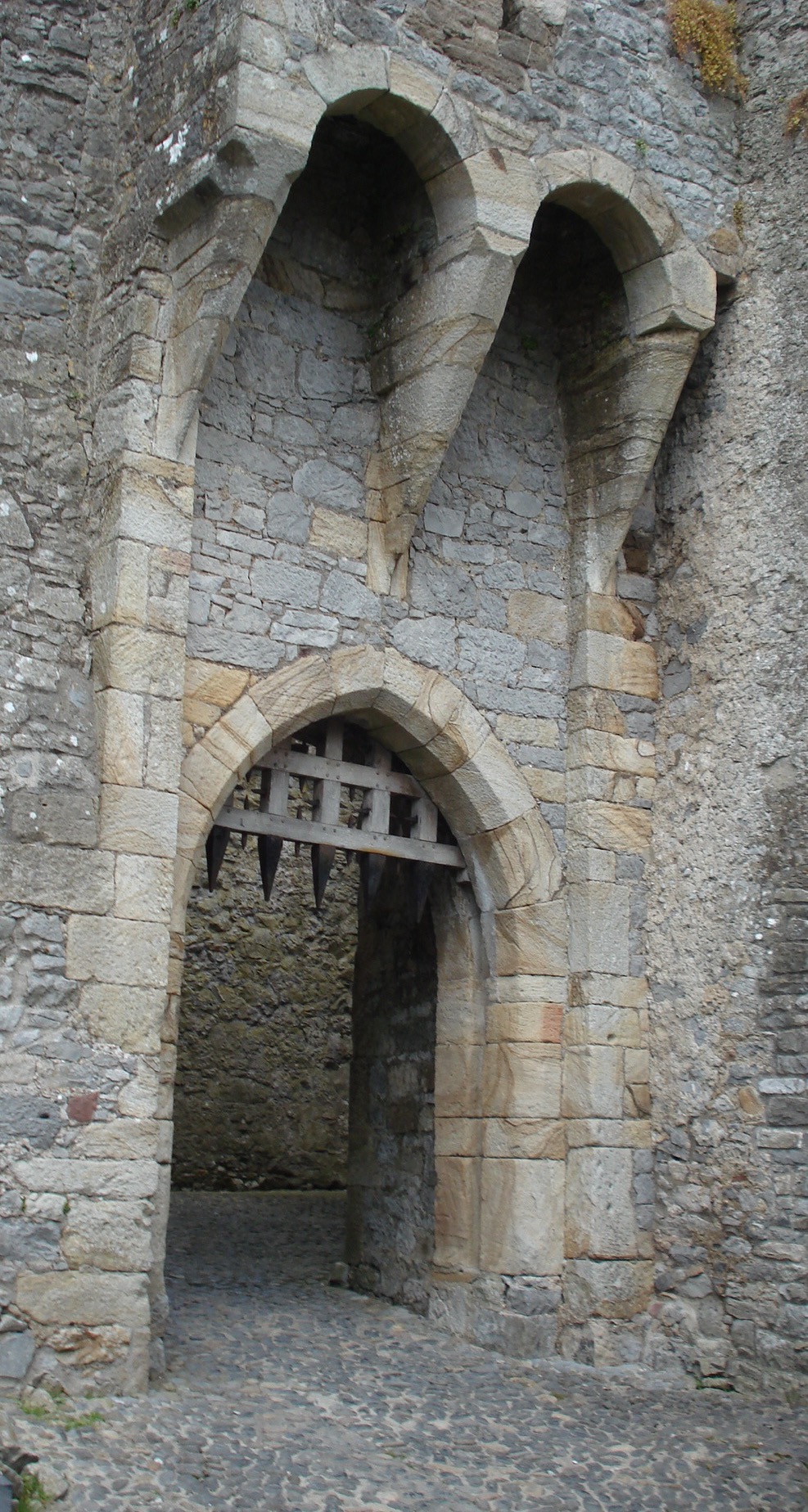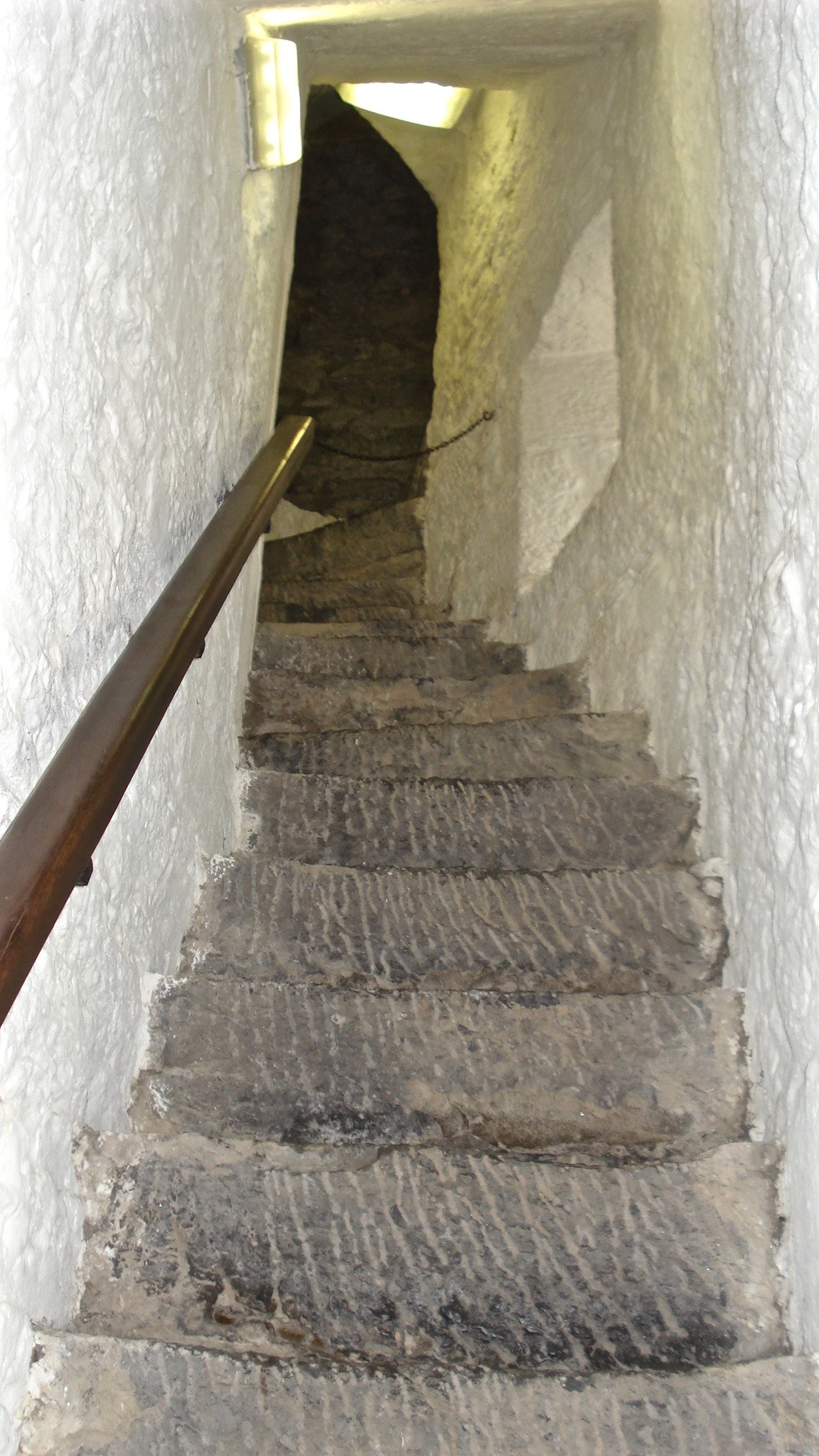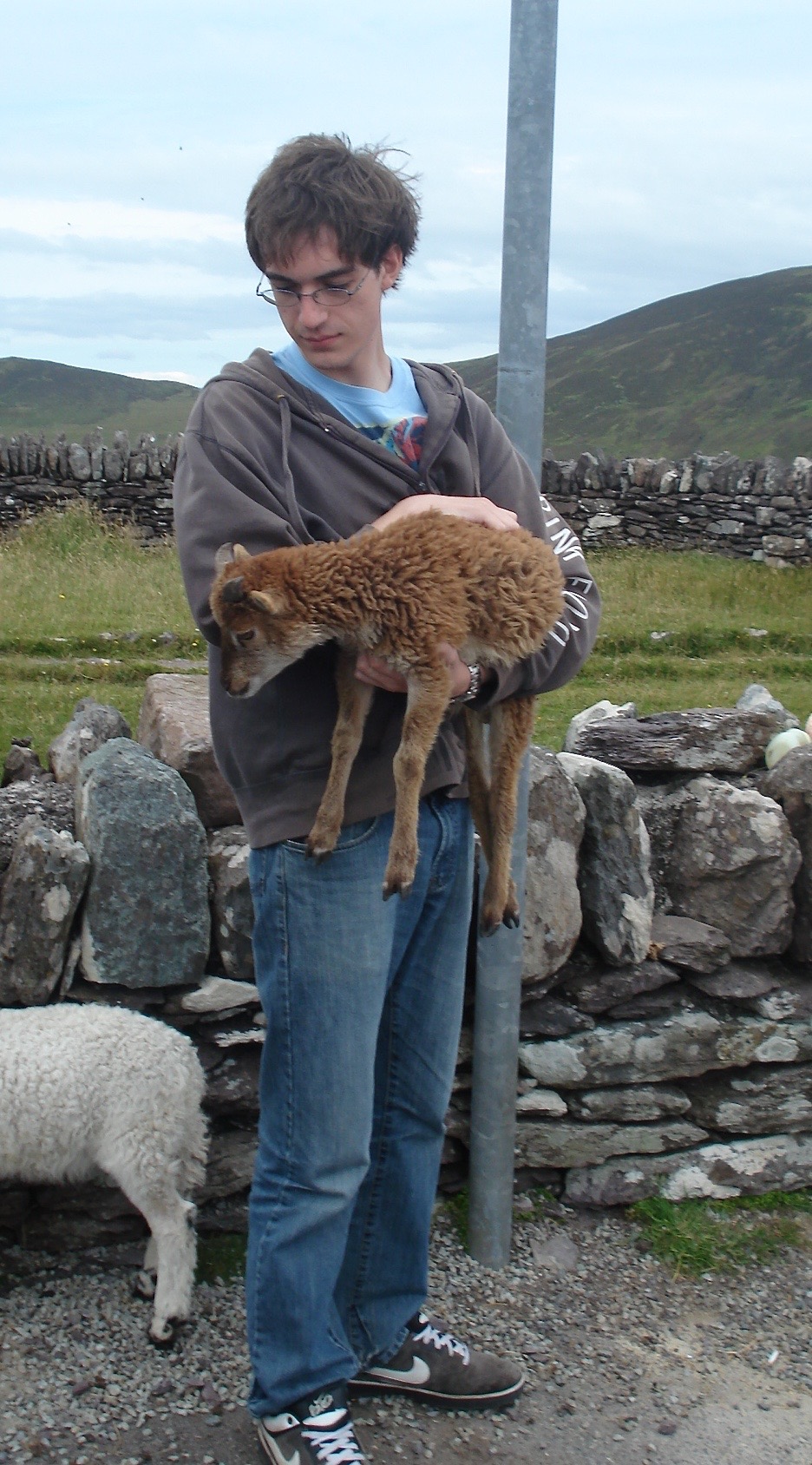Our Trip to Ireland, 2011
Our Trip to Ireland, 2011
by Mick Watson
Beth had been to Ireland once before, with her parents, and although she had bent over backwards to kiss the Blarney Stone, slathered though it was in spit from the hordes of tourists, she was not allowed to run wild and let her passions fly on that trip. I doubt if she enjoyed a few pints of that National drink, Guinness Stout. This trip, she hoped, would rectify that shortcoming. Even though I go by “Mick,” I am not aware of any Irish blood in me, but the rest of my family has it in abundance; so the trip would also be a pilgrimage to our forefathers. Before the trip, Beth had even been bitten by the genealogy bug and had found information on all four of her Irish grandparents and ancestors beyond. We knew which towns to visit to find their ancestral homes. We were lucky because a one-week window opened up for the “Thatched Cottage at Dunloe Gap.” So you see, not all of the luck of the Irish had run completely out in 1848, at the end of the Potato Famine, as many have suspected.
On Friday evening, July 15, we flew from Boston to Dublin. On Saturday morning we rented a car to drive to our cottage on the other side of the Island. Let me tell you, it was tough trying to get my old brain to adjust to driving on the left hand side of the road while sitting on the right hand side of the car and shifting with my left hand and on such narrow roads. What with all the new perceptual and cognitive tasks and my slow, senior citizen, reaction time, we missed our exit and so went down south along the coast. Instead of taking us four hours, the trip took eight, after a few mistaken turns and lost time. But we saw the southern coast of Ireland, some neat towns, and ate lunch at our first of many pubs (in Ferns), with John having his first of many fish-and-chips meals. In the Southwest, we headed through Cork and then up north to Killarney (which is very near our cottage in County Kerry). Although it didn’t get dark until about 9:30, we made it in just about dusk.
We loved the cottage, old with its thatched roof, with its rough hewn timbers and wide planked floors and corners and crevices, and Dutch style front door. Yet it was equipped with wonderful beds with fabulous European Decke covers, and it had modern appliances, showers, and so forth. It was a comfortable home base. We stocked up on some basic provisions for our breakfasts and occasional dinners. However, for dinner that night we went to a nearby pub called Katie Kearney’s, just a short distance up the road from us, in the Gap of Dunloe (a wonderful, glaciated mountain canyon filled with lakes), had a great meal (salmon this time for John) and listened to a traditional Irish band. At this point we were a little loopy and settled in for a long sleep.
On Sunday, after getting up late, we went into Killarney to look around and then explored nearby areas. We had lunch and dinner in Killarney.
On Monday we decided to find the first of Beth’s ancestral homes. We drove north to Athenry (a little east of Galway City in County Galway). This charming little town was the home of Beth’s maternal grandparents, at least the Ruane side. This ancient town is still surrounded by its old stone wall. We visited a church and cemetery with many old Irish crosses. One of the workers there had a sir name of Ruane. We also went through the Athenry Castle.
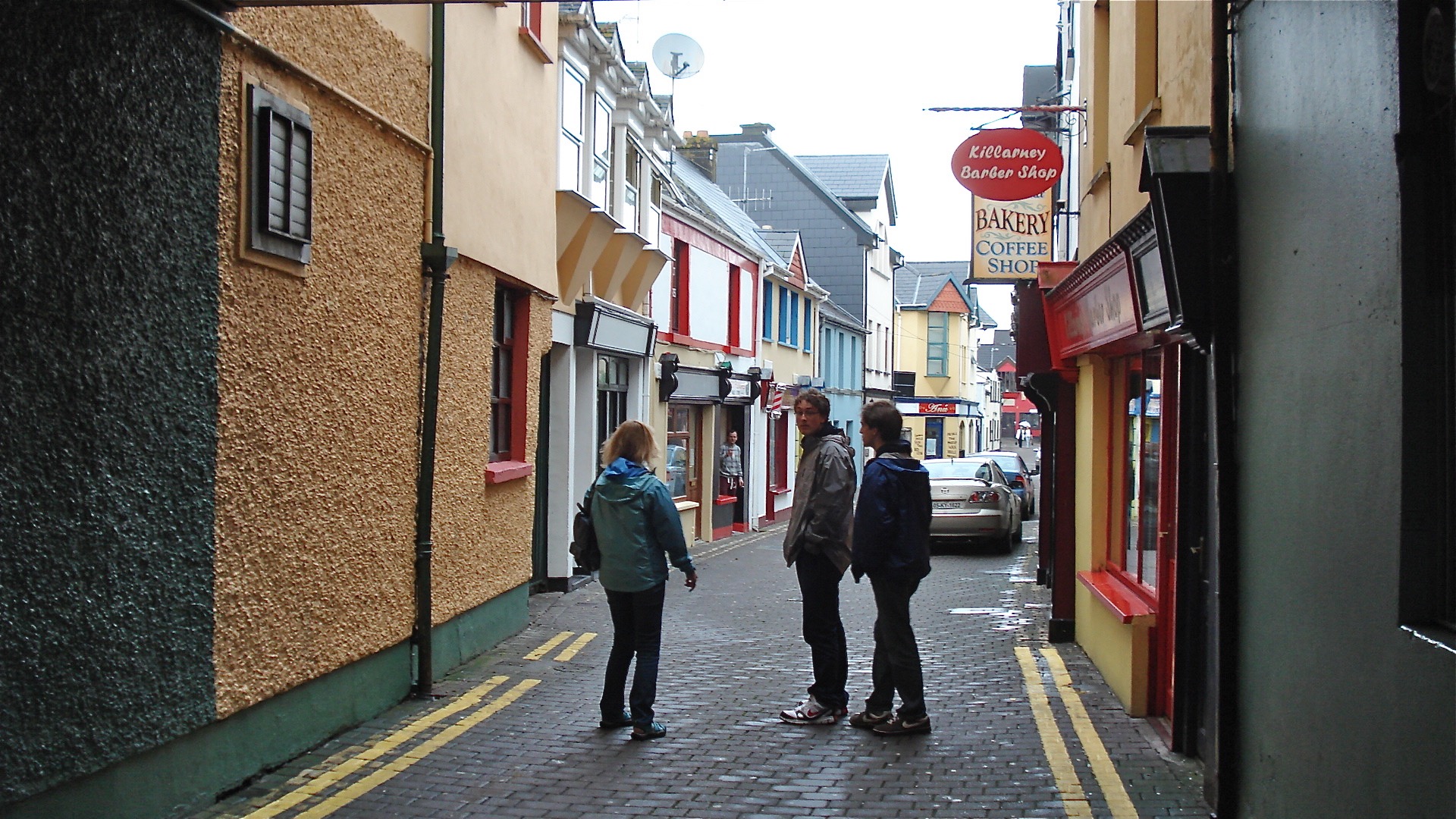
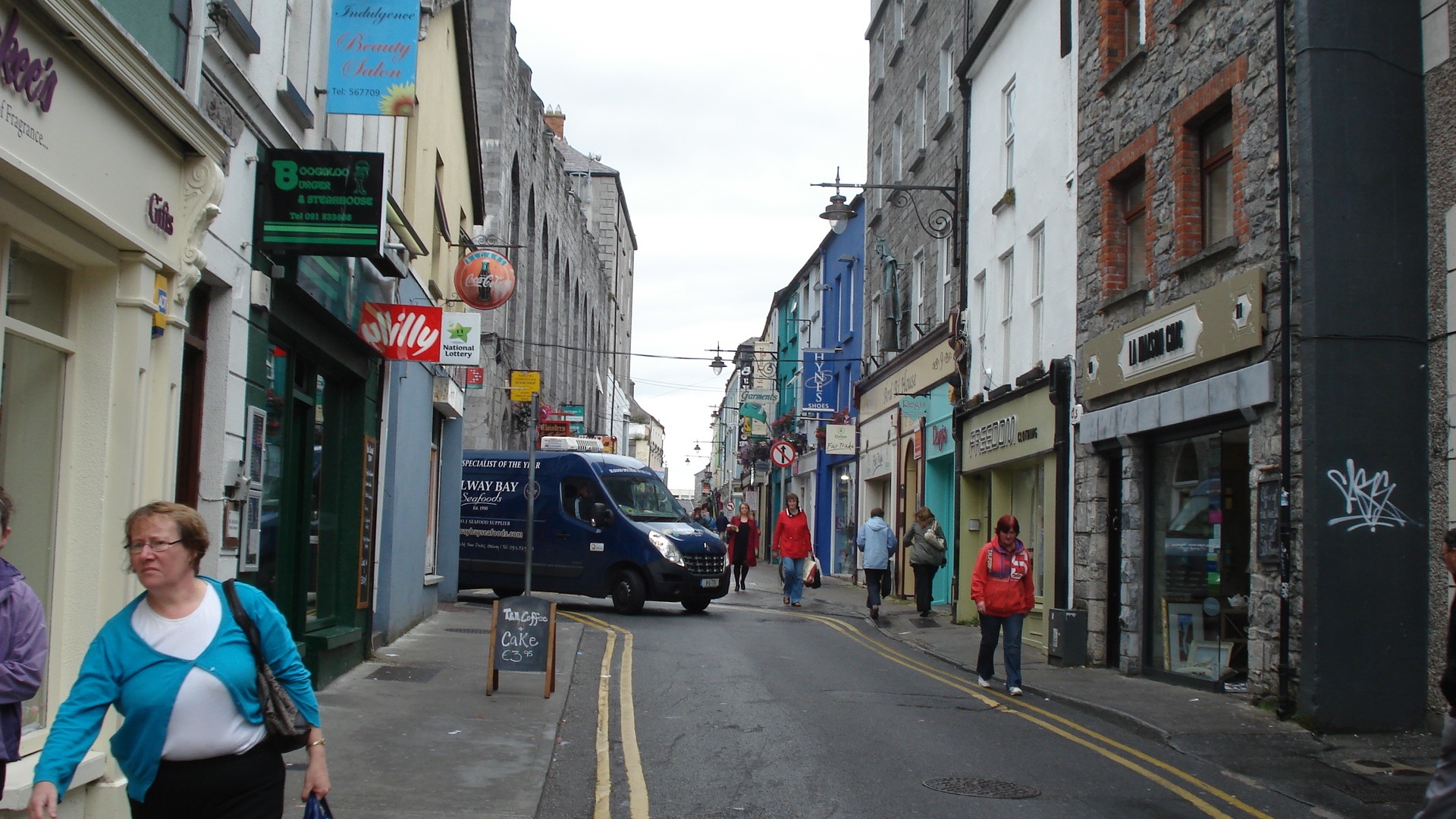
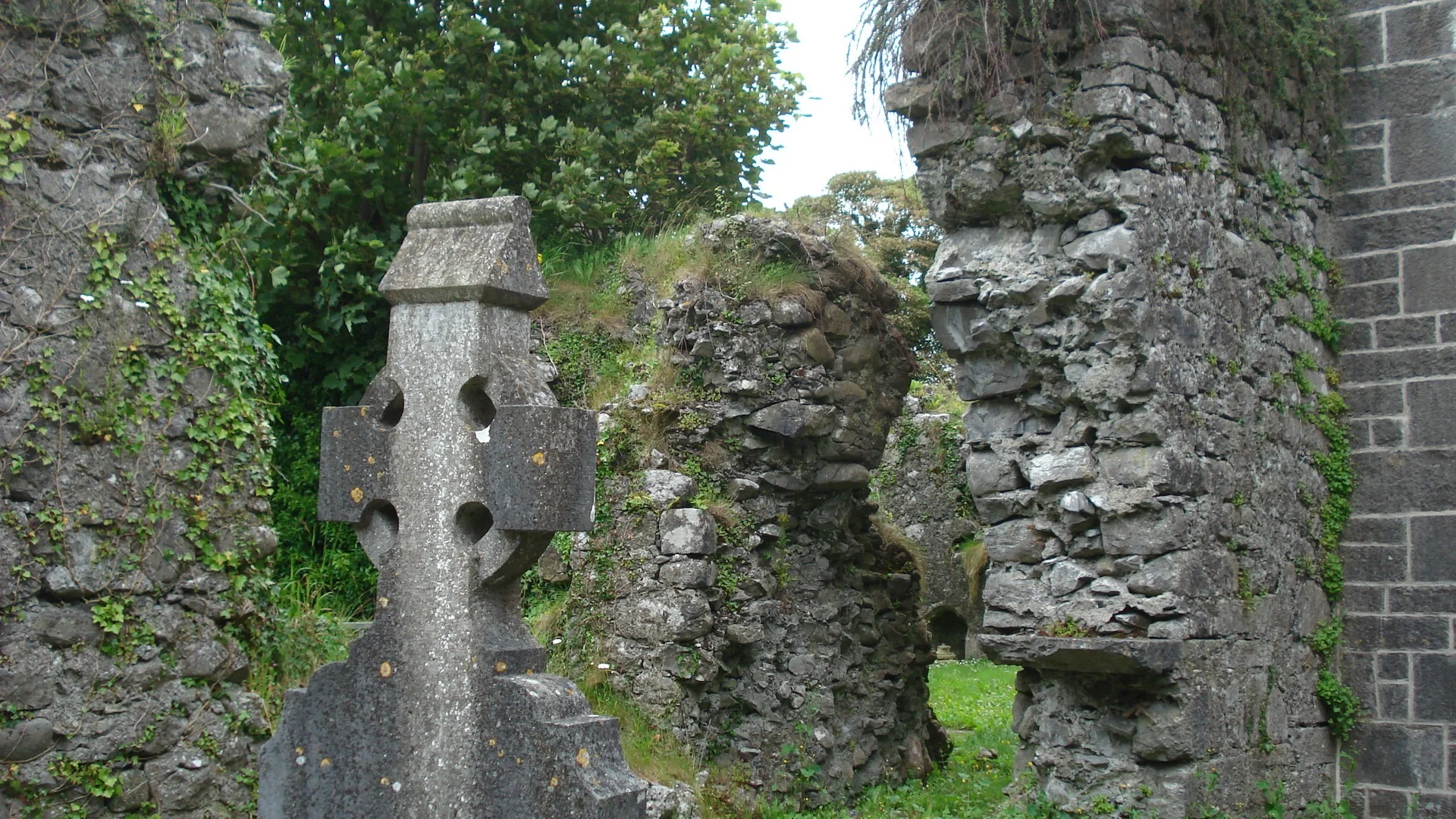
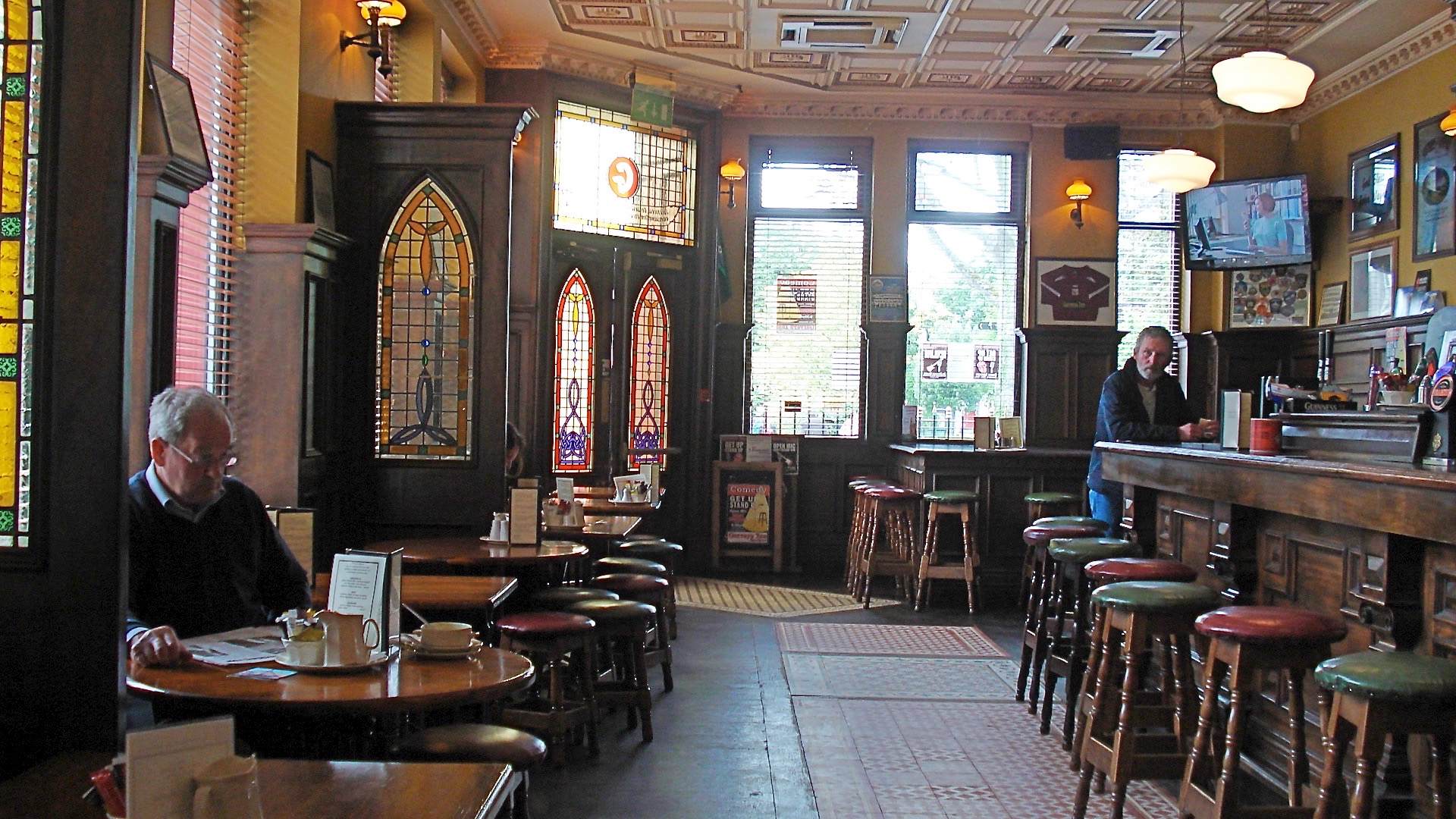
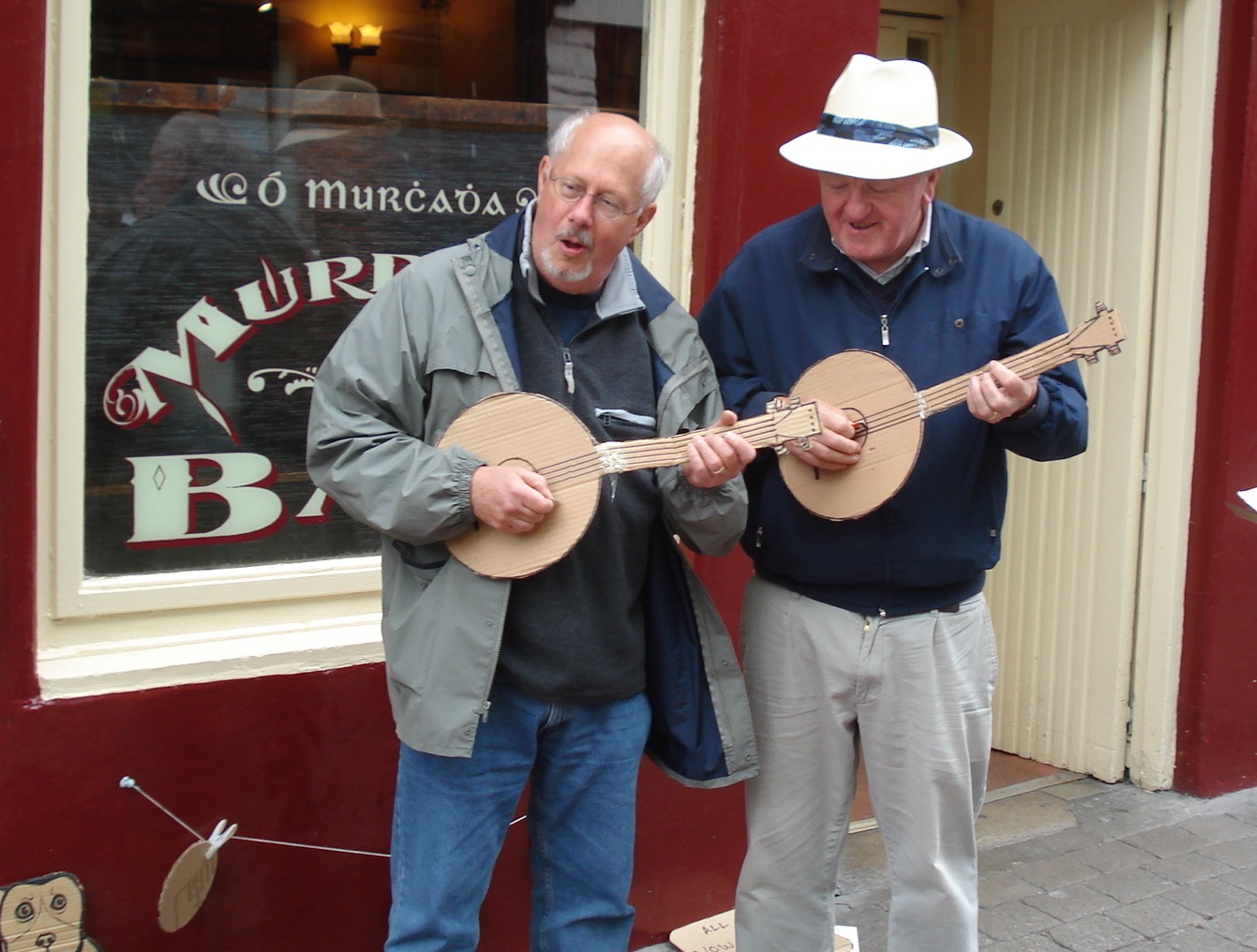

Afterwards, we went into Galway for lunch at a terrific pub. We hung out for awhile watching street musicians and bought some hand knitted sweaters.
Then on the way home, we drove out through the Burren (a hauntingly beautiful area of slabs of exposed limestone) in County Clare. We went to the western most town of Doolin, the spiritual home of fiddlers in County Clare, and we learned the difference between the high spirited and funky Irish fiddling of western Clare and the more haunting and sad fiddling of eastern Clare. (We now own fine CDs of some of the stars of each style.) We wanted to visit the Cliffs of Moher, but by that time in the evening, the road was closed. We did see them from a distance, looking back at them from Doolin. Beth declared that she wanted to live on the Burren and would gladly retire there. Of course that resolve lasted only until she visited the Dingle Peninsula the next day.
It is Tuesday, so this must be the Dingle Peninsula. Beth drove out. I drove back. Ah, the Dingle Peninsula! Of the several juts of land into the sea on the western coast of Ireland, this peninsula juts out the farthest. Of those beautiful areas, this arguably tops them all. I know that it is difficult to rank order places of natural beauty in a world with so much variety, but this place has to be up there near the top. For me personally, I would say my top three rated places are the mountains and fjords of Norway, the red rocks of the great Southwest (e.g., Zion, Arches, Canyon de Chelly), and the Dingle Peninsula, not necessarily in that order. We also loved the town of Dingle. Like so many Irish towns, this one had rows of colorful buildings and houses lining narrow streets. With multiple shops and restaurants and of course pubs, these towns are all neat. But Dingle seems to be a cut above in neatness, built as it is on a sloping hillside that flows down to the Dingle Bay and its fishing harbor. So it is no wonder that Beth had now decided that this was the place she wanted to live. As an aside, I did keep my eyes open for a dish served there called Dingle Berry Pie, but, alas, they don’t have such a dish.
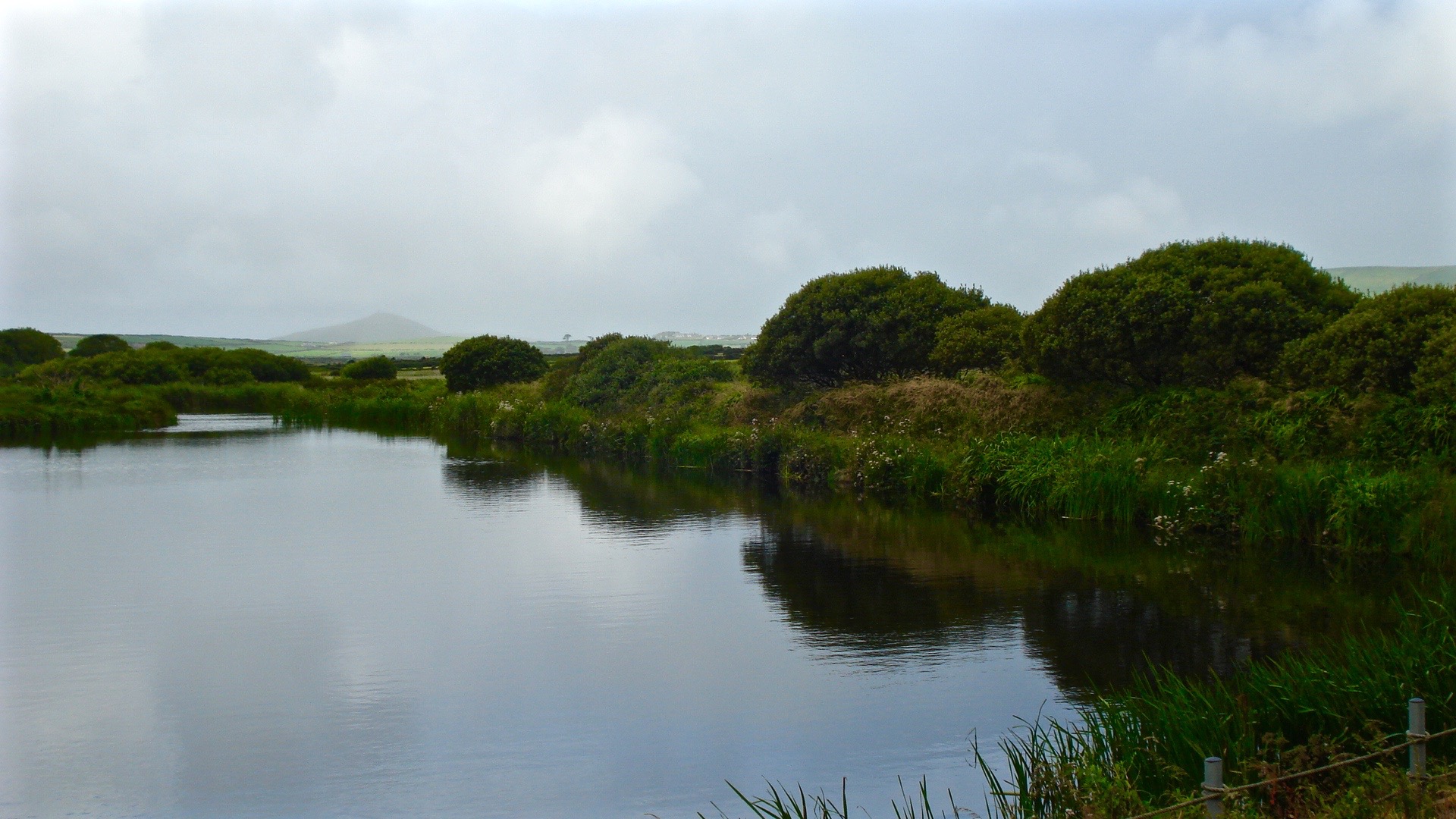
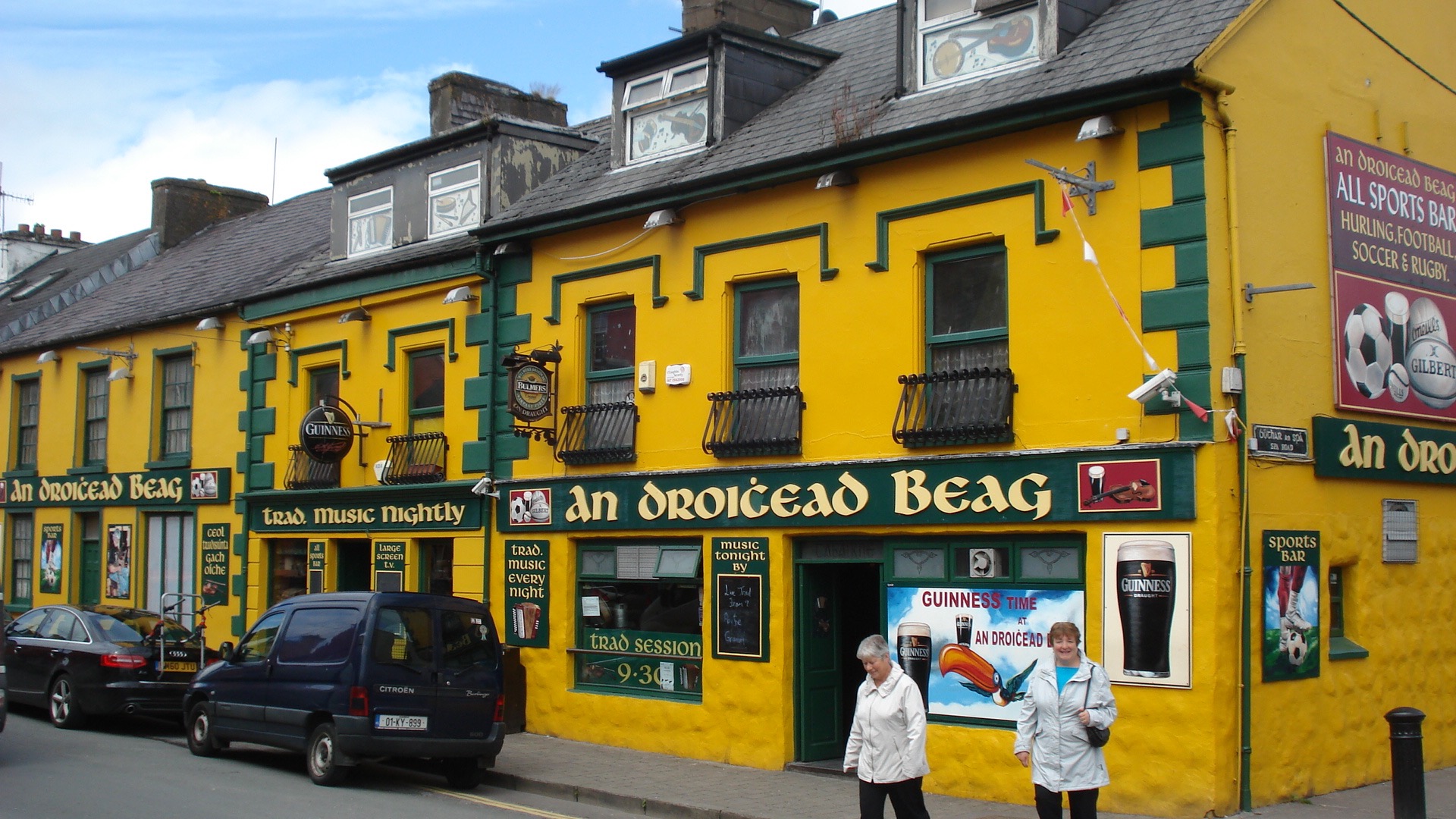

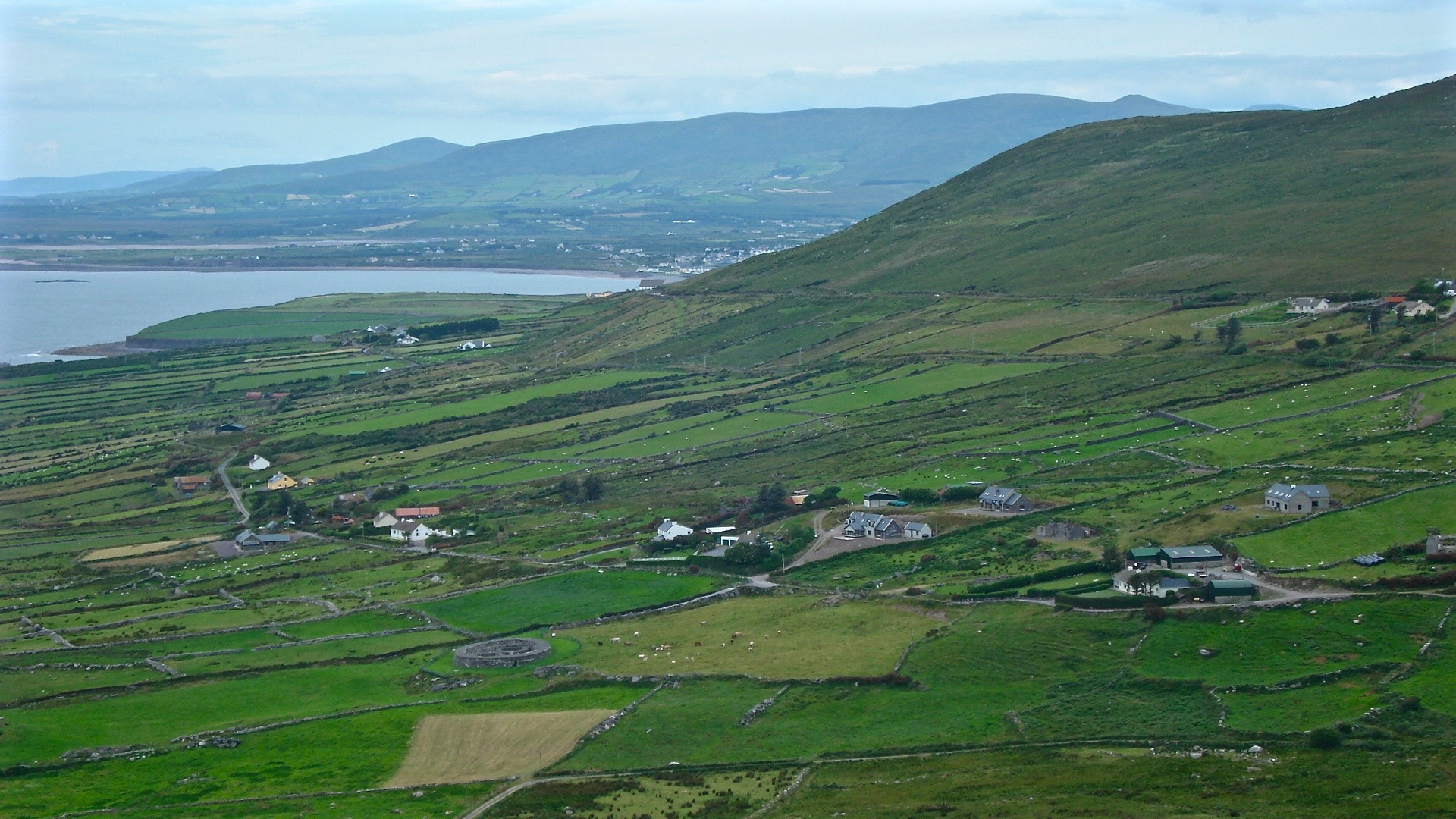
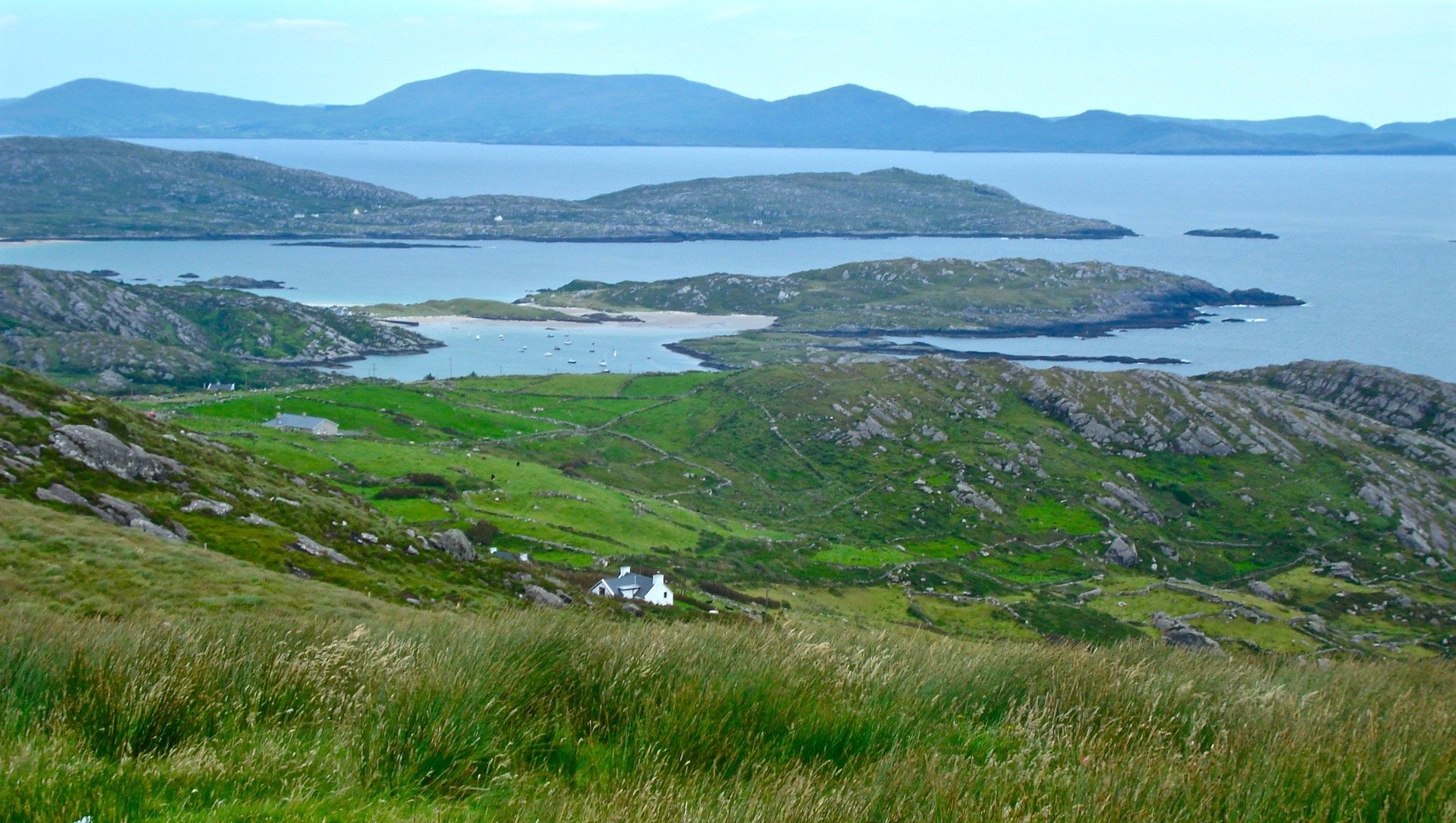
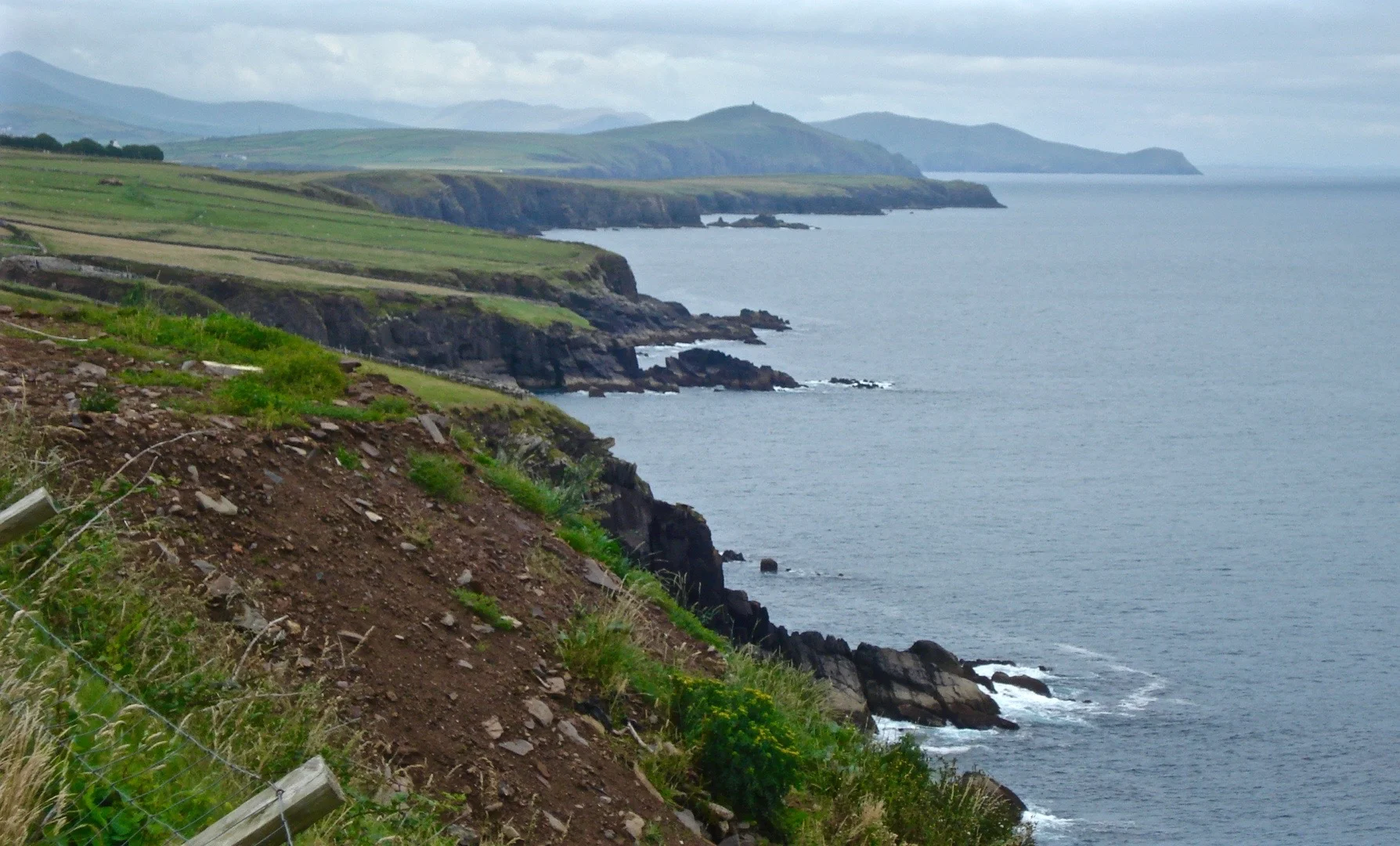

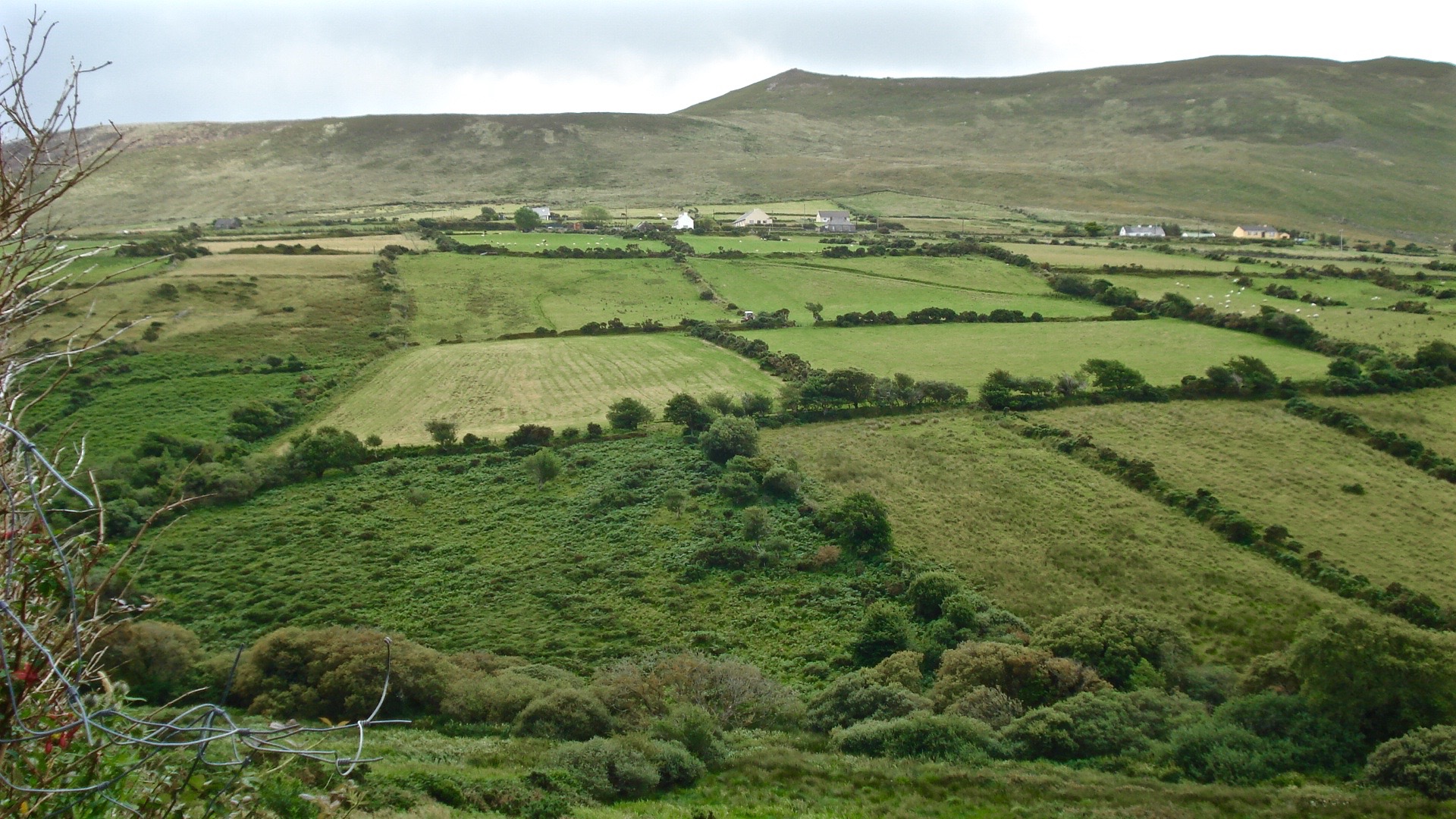
And now comes the grim downside of our story. I have to say that the vicious rumors about the narrow roads of Ireland are not completely true. The roads are much more narrow than is described in the rumors. Often one must drive on what amounts to a one-way lane, but of course always a two-way road. The roads are often flanked by stone walls, cliffs, or hedges flush with the side of the road. For the most part, Irish road builders have not heard of shoulders along the road either. Add to this that we were attempting to get used to driving a different way. We left Dingle and drove out toward the tip of the Peninsula, passing ancient stone forts and huts built in the BC era, and of course, myriad sheep. Around the tip of the peninsula we came to one of the narrowest roads on our trip, with a high cliff on one side and a stone wall on the other, overlooking a cliff drop off to the ocean below. I was taking it slow but found myself facing a large camper RV coming from the opposite direction. I would have backed up, but at that point I couldn’t, with a line of traffic behind me. At the narrowest section, he tried to pass me. Because he yelled at me to go and wouldn’t back up, I foolishly tried to go forward, missing him by about an inch, and in the process scraping up my car on the left side against the stone wall. I somehow believe the other driver was a dumb American out taking a vacation with his wife as he would have in the U.S., with his big RV. We called him some terrible names that I can’t say here, but to clean it up, I will call him Shit-for-Brains (SFB), a polite term for him. This accident flustered us and ruined the rest of our day. And well it should have. In returning our rental car at the end of our trip, the rental company charged us our full deductible—over $2000 in American money—for those minor scrapes. Lessons learned: take out full insurance coverage; stay away from SFBs; and just because an Irish road says the speed limit is 100 km. and is two-way, you don’t have to take it. When the spirit says no, don’t go!
We drove back through Tralee, thinking we would eat dinner there, but, despite the beautiful name, we found it to be the only town on our visit that was severely depressed and not a good visit.
On Wednesday, still recovering from our mishap and now a little gun shy about driving on narrow roads, we decided to find the second of Beth’s ancestral homes. We drove inland from Killarney to Mitchelstown. Little did we know that these roads would also be narrow. Mitchelstown was an ok town and was the location of Beth’s paternal grandparents, the Hennessey’s (there and in nearby Killee). There were no signs whatsoever for Killee and no map markings; so we asked at the Post Office how to find it. They knew the place and were helpful in directing us there. About 3 miles outside of Mitchelstown is Killee, which is really no town at all but has a few farms and one old homestead called the Killee House. However, we found the Killee Church. It had a spire and cross and a front door that were old, probably taken from an older church on the site, but the rest of the building was newer. We are quite sure that this was the church site where Beth’s paternal great grandparents were married. So, of course we went in and spent a little time. Nearby was an old stone house in ruins, overgrown with vines and trees. I suspect this was Beth’s ancestral home, but she says “No.”
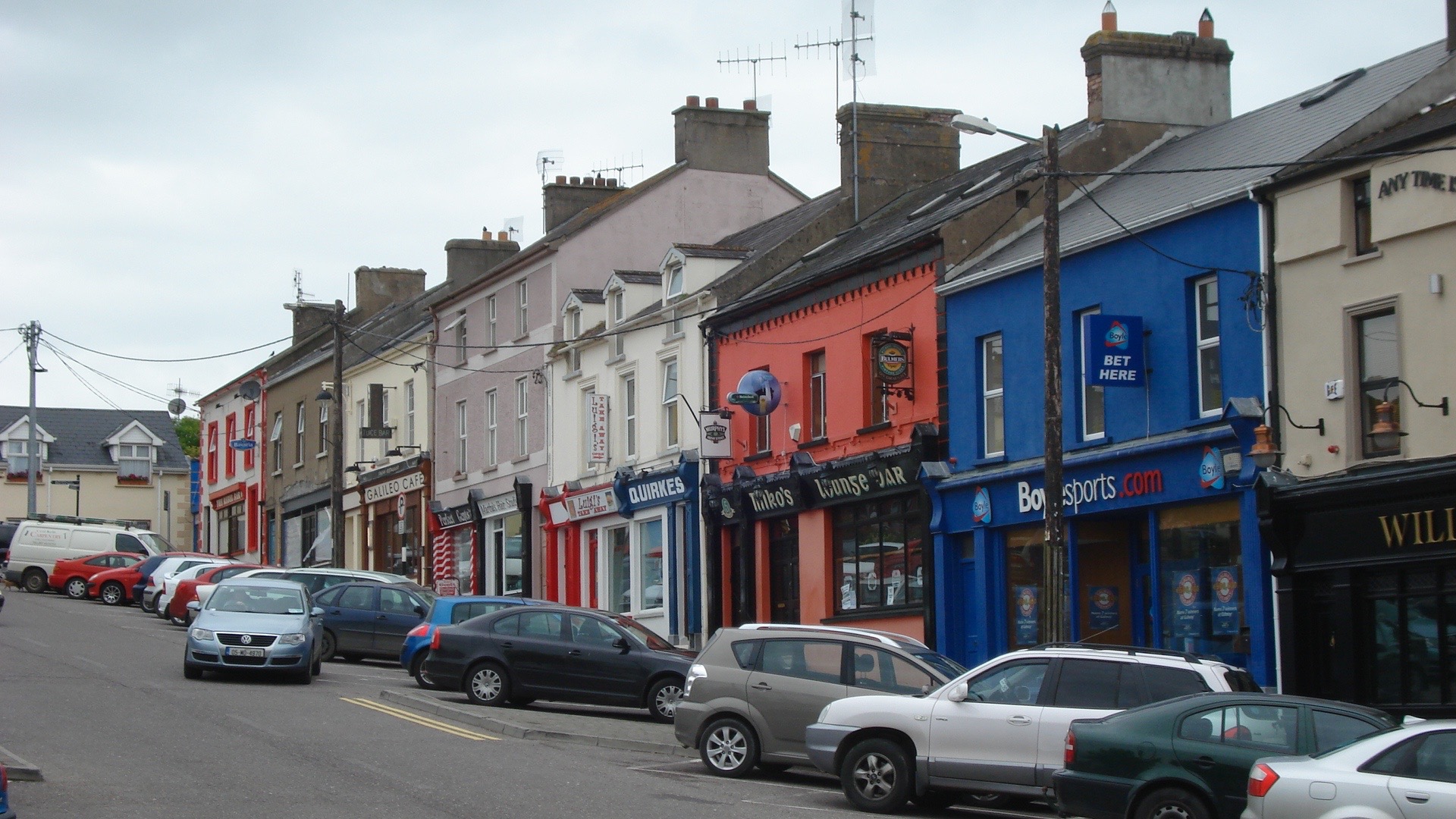
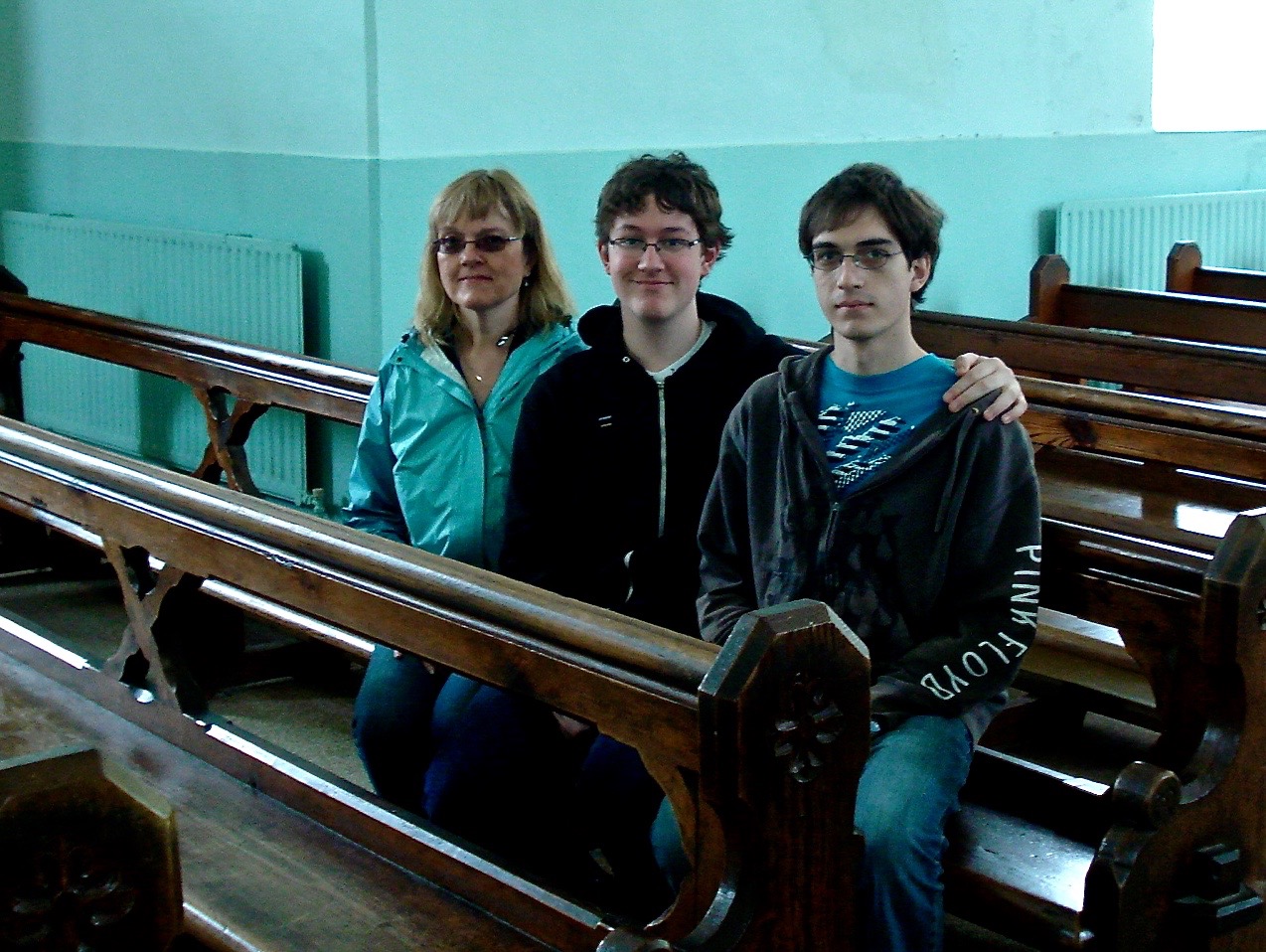
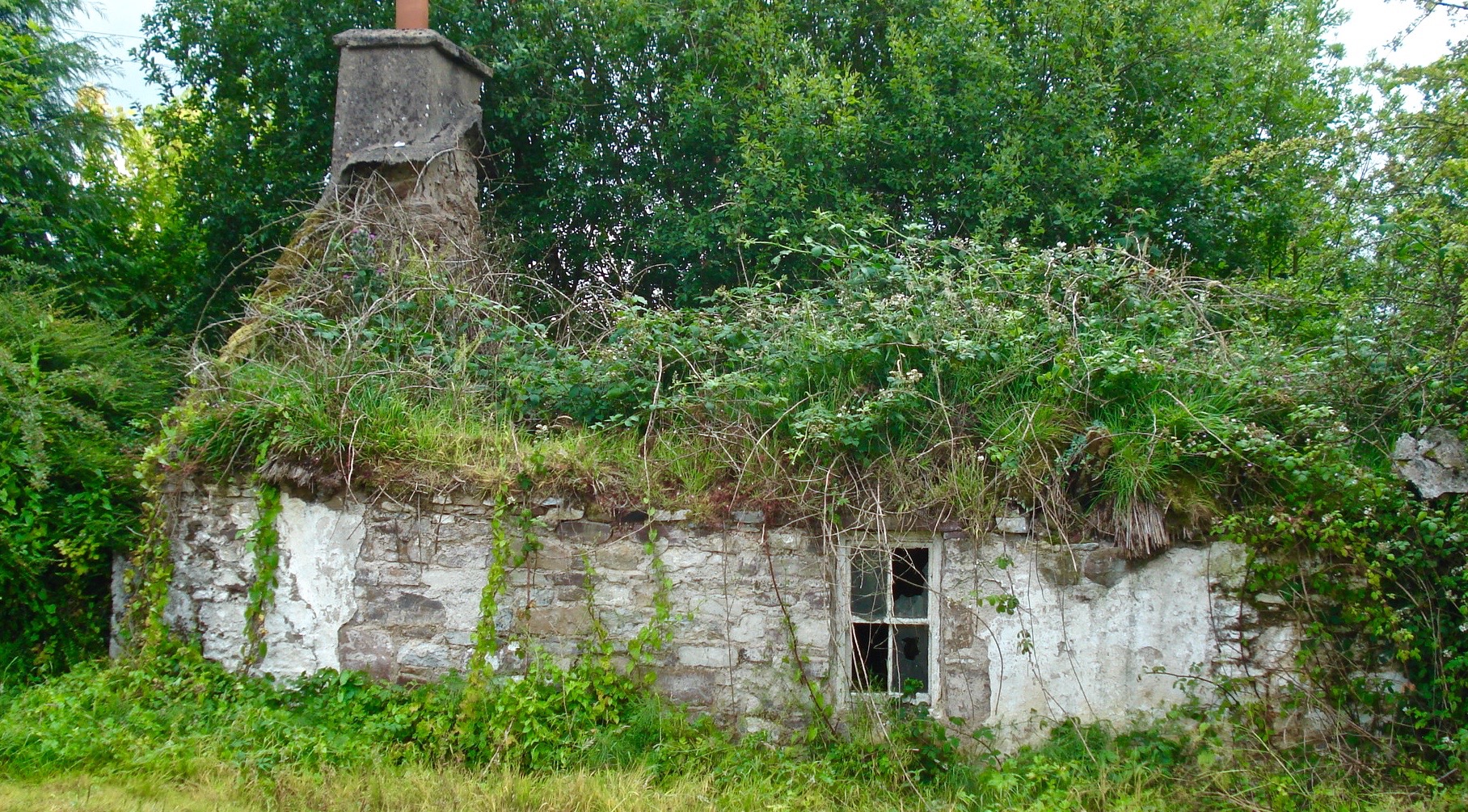
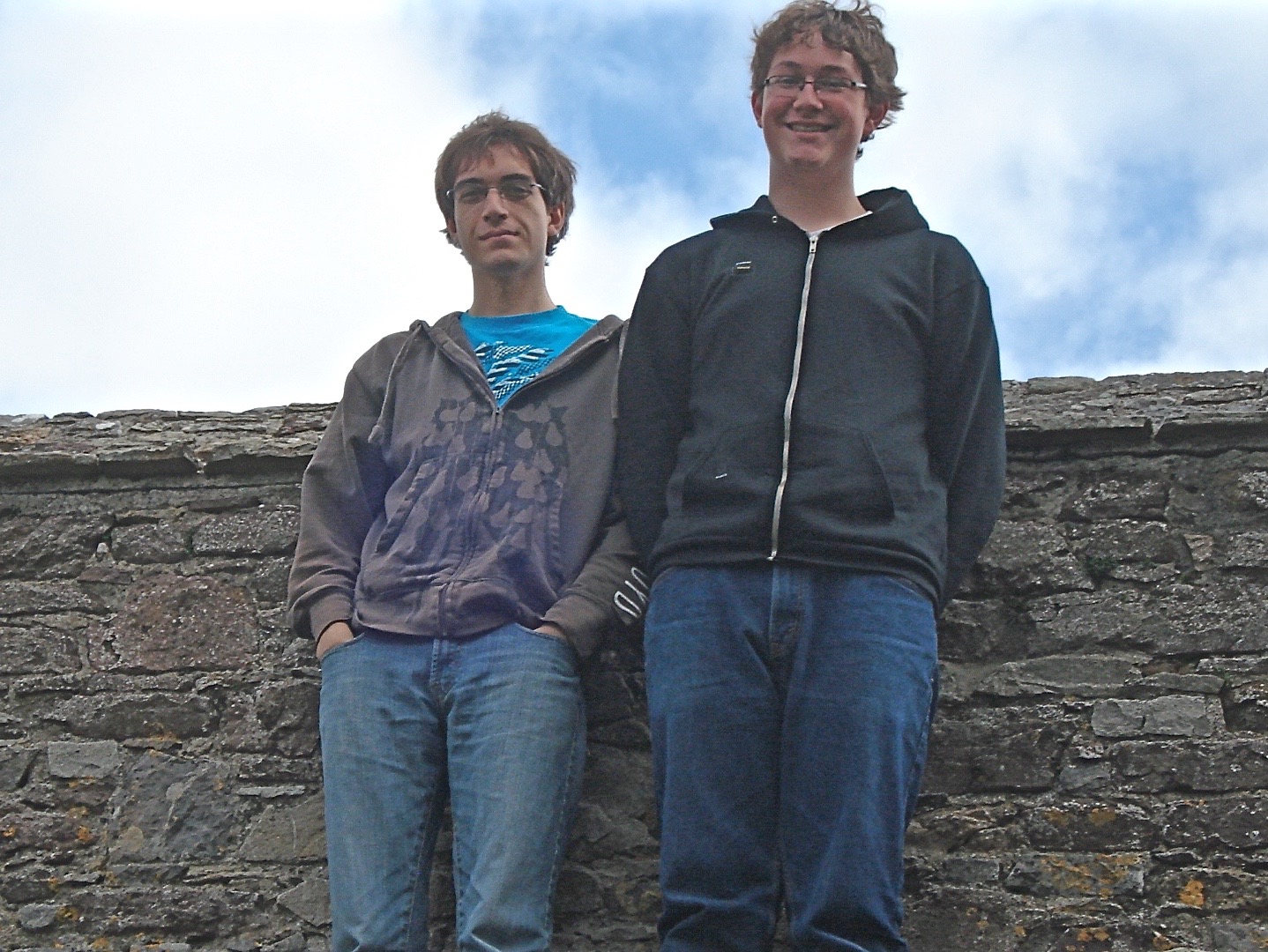
After the ancestral visit, we drove on up the road to Cahir, had lunch at one of the pubs, and went through the Cahir Castle, our second castle visit on the trip. This one is truly a prototype, old, built on a small island in the middle of a river, and surrounded by a moat, which is fed by the river. We went through it and found the living quarters, the dungeon cells, and the turrets. We also found the potty, which worked by gravity—it was a long drop into the moat. As an aside, there seem to be as many neat looking castles in Ireland as there are Dunkin Donuts in Massachusetts. After Cahir, we visited Mitchelstown Cave, a limestone cave with the usual neat stalactites and stalagmites. And then that evening we returned to Kate Kearney’s for more great pub grub and Irish music.
Speaking of pub grub, I have to say that almost all the meals we had on this trip were fantastic. Despite some older reputations to the contrary, the Irish can cook. We did eat a lot of Irish traditional meals, such as stew, pies, bangers and mash, lamb shanks, and salmon. Beth loved the brown soda bread, and we did indeed try black and white puddings. (Don’t make me tell you what is in them.) And, yes, the Irish drink Guinness as we drink soda in the U.S. We did indeed enjoy our meals.
Now on to Thursday. We decided to stay closer to Killarney and explore this part of County Kerry. We went through the Muckross House, an old mansion/castle, furnished from the Victorian era and owned originally by wealthy land barons. The grounds were beautiful and also contained a great working farm/museum, along the order of Plimouth Plantation. After spending some time in this area and becoming enamored with the farm animals, especially the newborn piglets, the border collie puppies, and the Irish wolf hounds (if you are in Ireland, you have to pet an Irish wolf hound), we drove southwest to the town of Kenmare, a beautiful little town that was unfortunately filled with tour buses and crowds of tourists when we arrived.
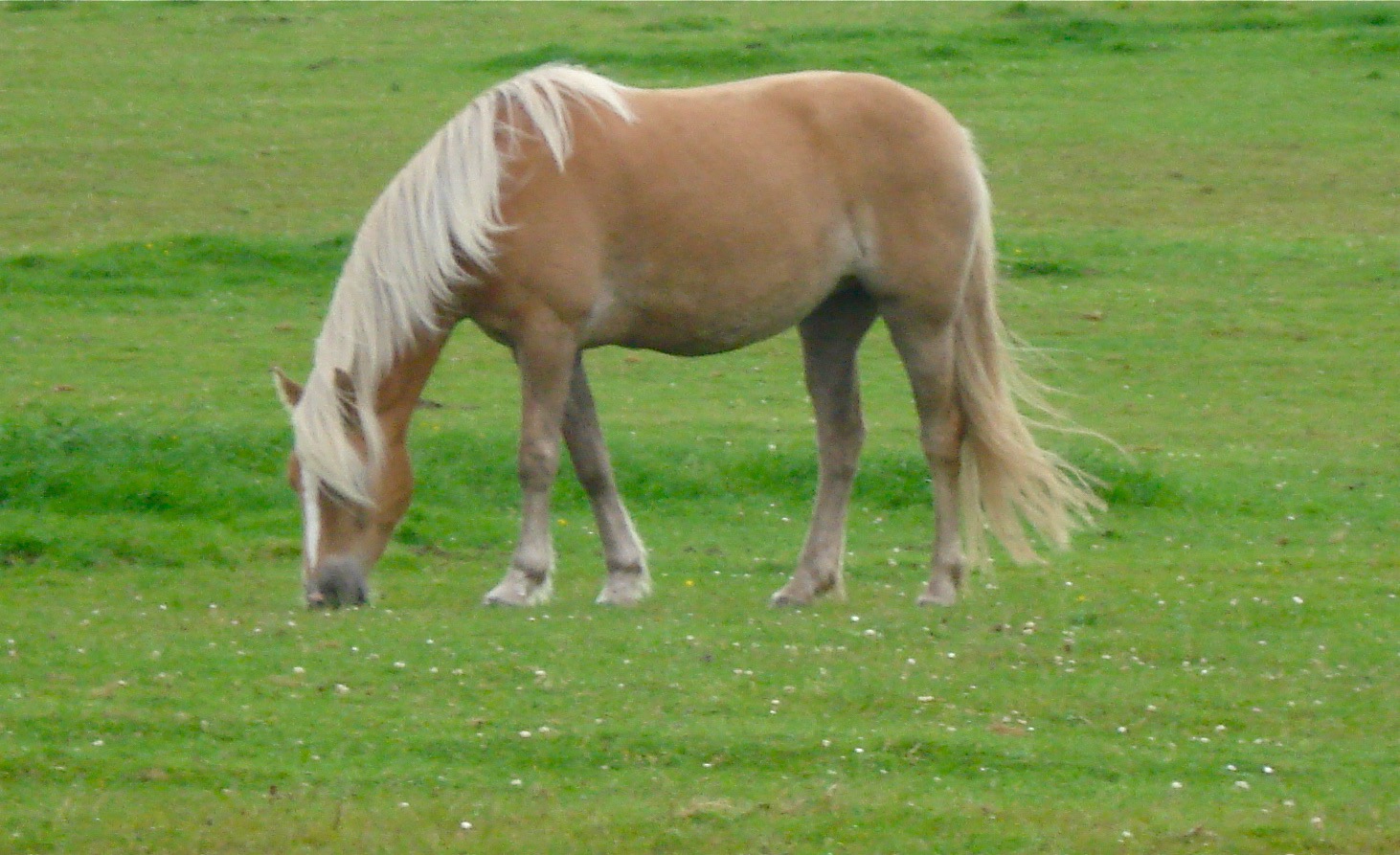
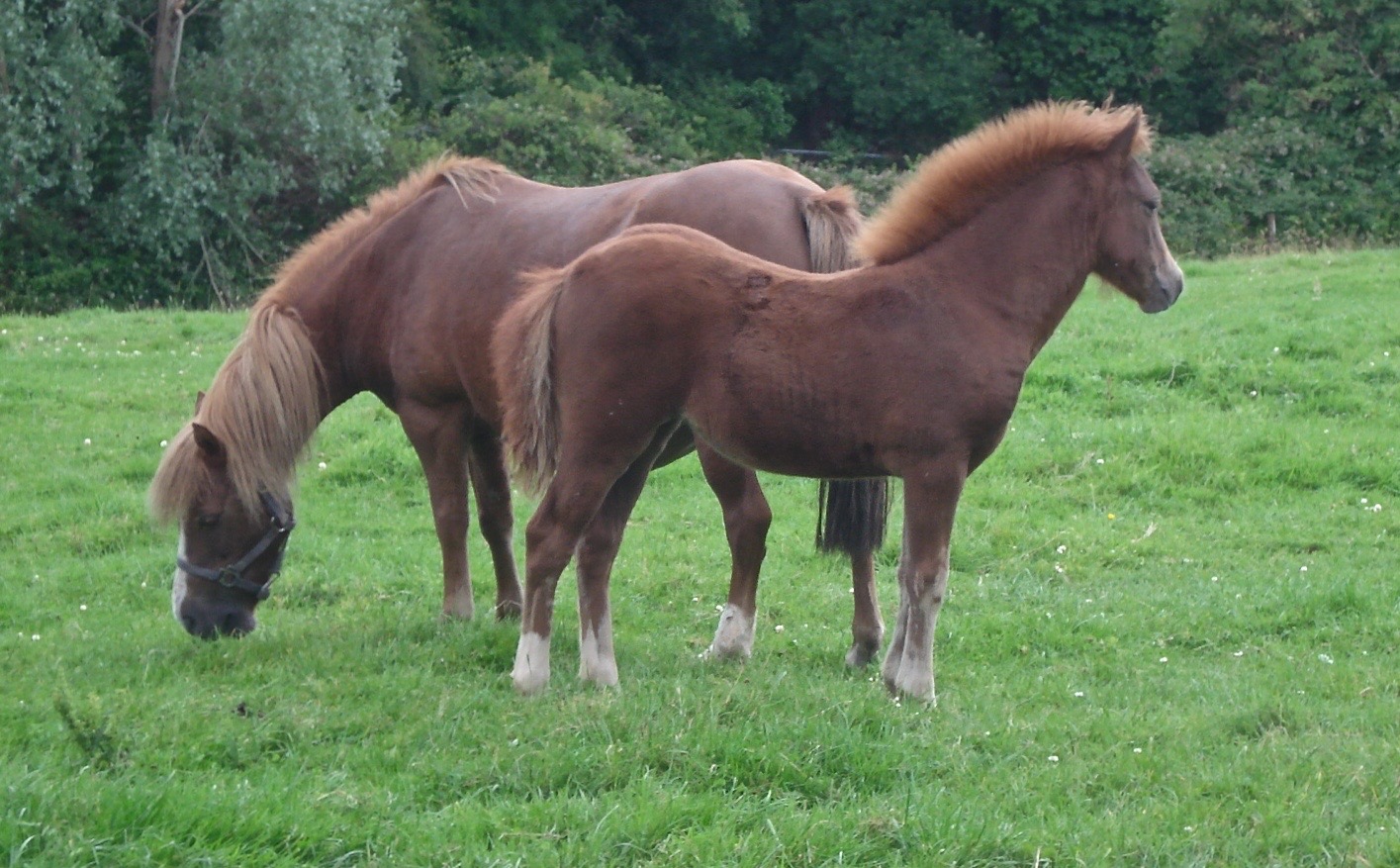


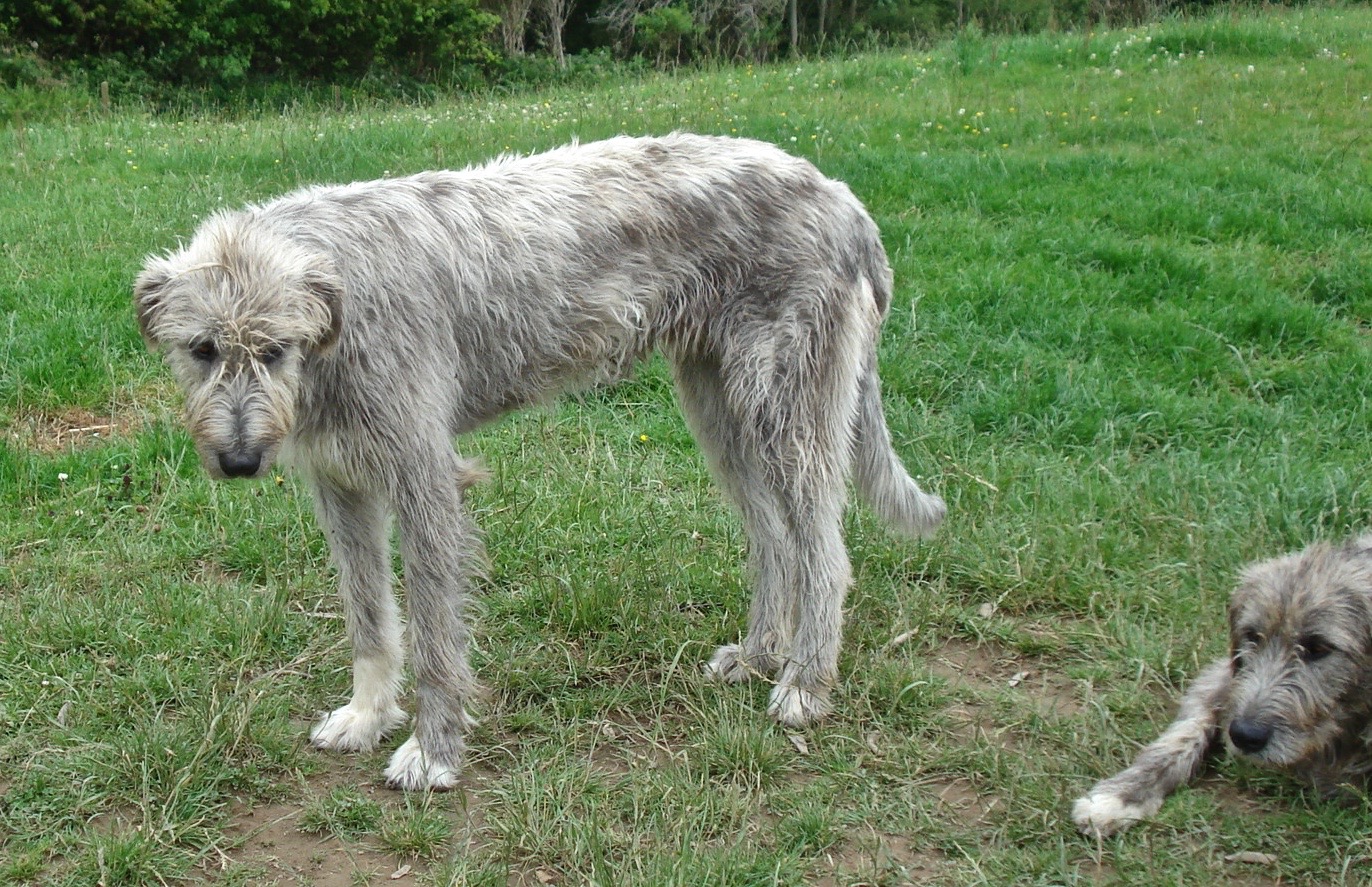
And so I must explain something about the people of Ireland. Aside from the few SFBs, there are basically three kinds of people in Ireland: the Irish, regular tourists (such as ourselves), and bus people. We loved the Irish; the regular tourists were tolerable (such as ourselves), but the bus people drove us crazy. In all fairness, there is probably nothing wrong with the bus people. They are probably friendly, generous folks who love their families and friends and take care of their lawns. The problem is that there is such a concentration of them in one place. So, you might be in a pub settling down for a delightful meal, and a bus or two pull up and unload hordes of people into the same pub or into the same store where you are browsing or the same view where you have stopped to look at some Irish ponies. In addition, you occasionally meet a bus going the opposite way on one of the narrow roads, and, well, you know that story. (By the way, busses are not allowed on that road where we met up with the SFB.)
Now as to the first and most numerous kind of people in Ireland, the Irish themselves, let me say that they are not so pure as one might think. After all, the poor people of Ireland have had an almost continuous onslaught of invaders coming in, trying to take over, and making Ireland their home—the Scots, the Normans, the Anglos, the English, several other groups from Europe, and, of course the Vikings. In fact, if an Irish person has red hair, and there is a reasonably high probability that if you are Irish, you will have red hair, then it is almost guaranteed that you had some Vikings back in your family tree. So the Irish aren’t pure Celtic, even in those areas where Gaelic is the first language. The Irish are mutts just like the rest of Europe. But one more thing that they are: friendly. And helpful—what a nice way to be.
I guess I should end Thursday. That evening we returned to our cottage and went on a pony cart ride up the Gap of Dunloe, a nice jaunt in the evening. John had preferred to hike the Gap; so the next morning he got up early and hiked and ran up the gap, again, and made it farther up than we went with the pony cart.
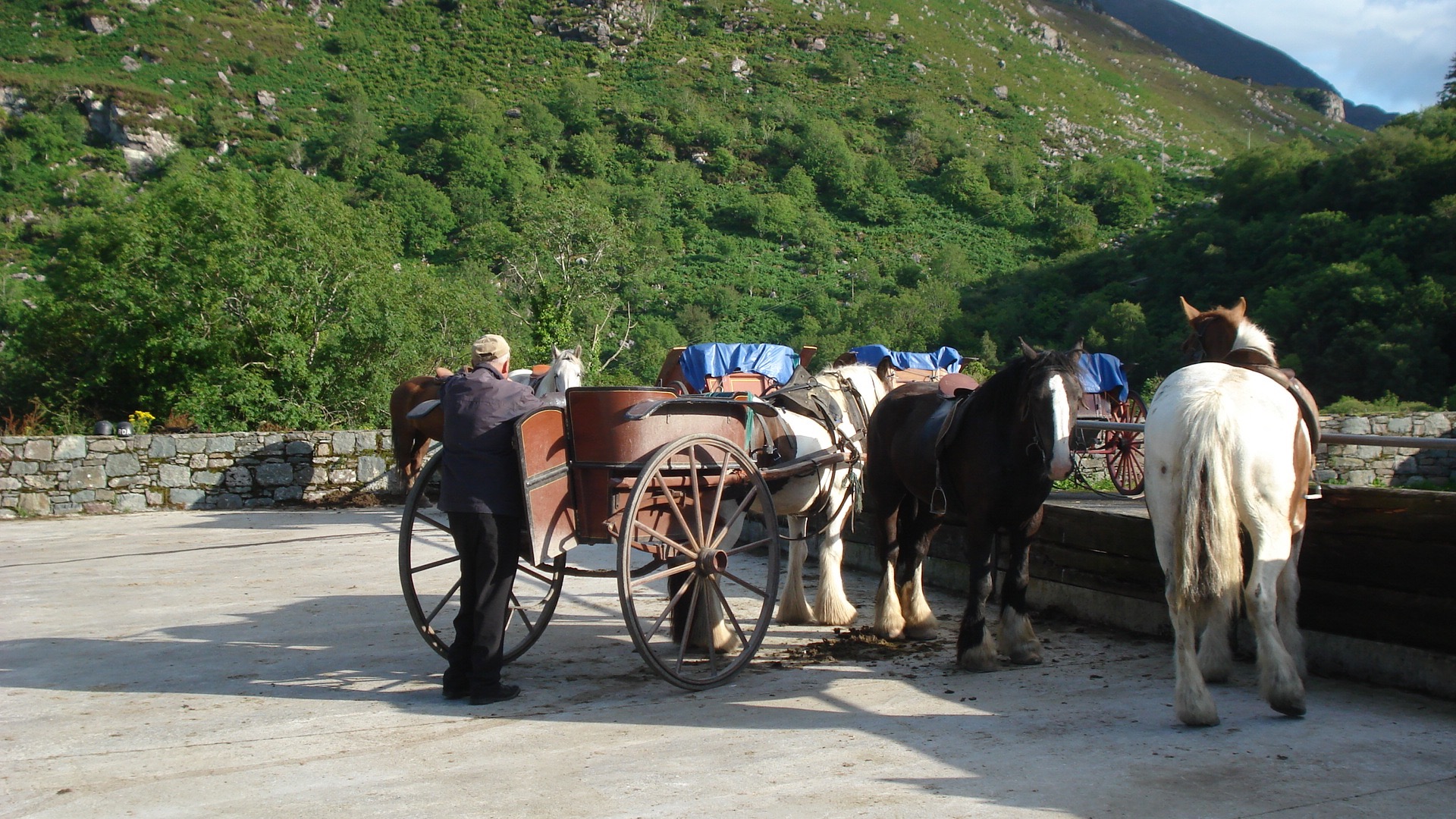
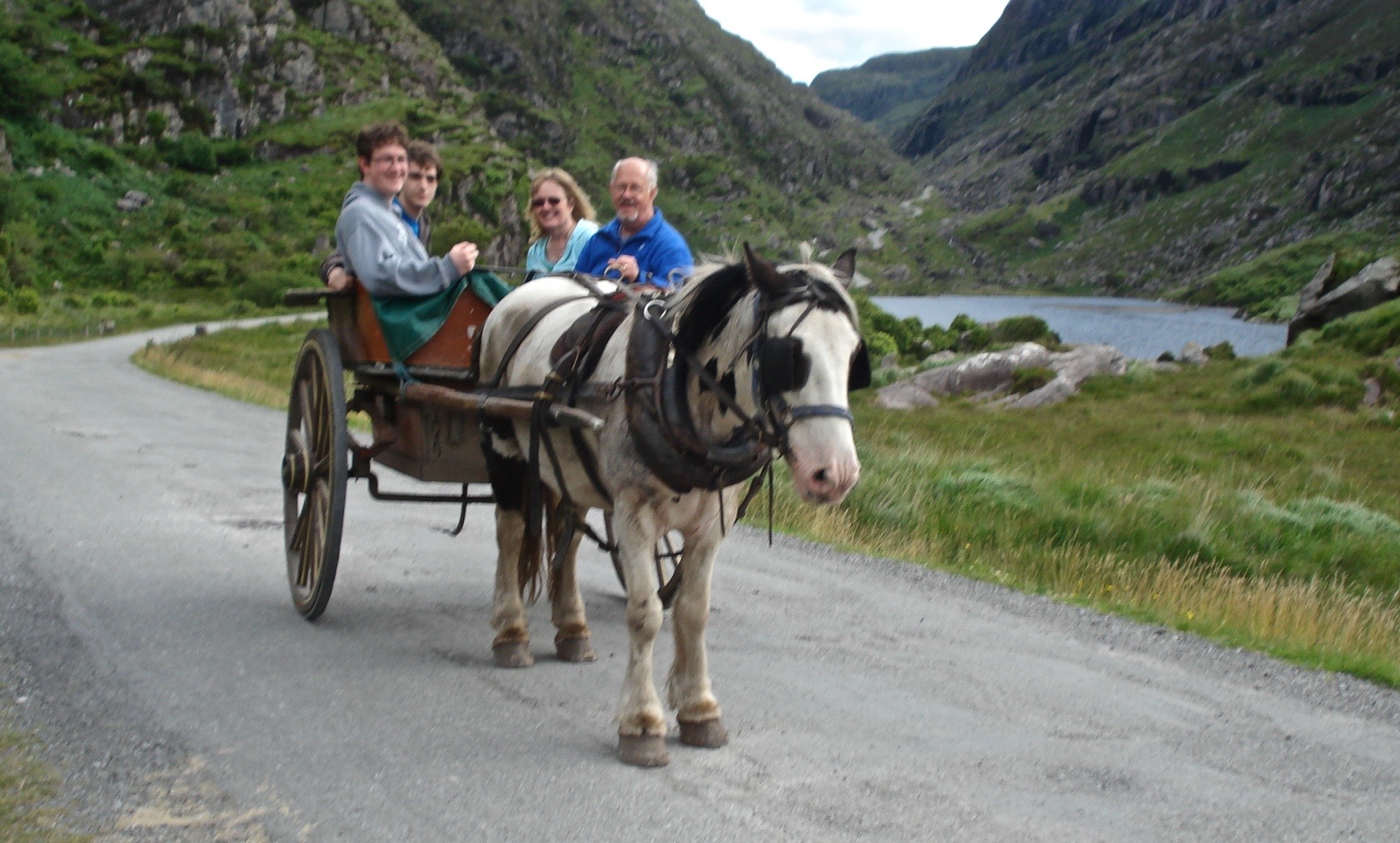
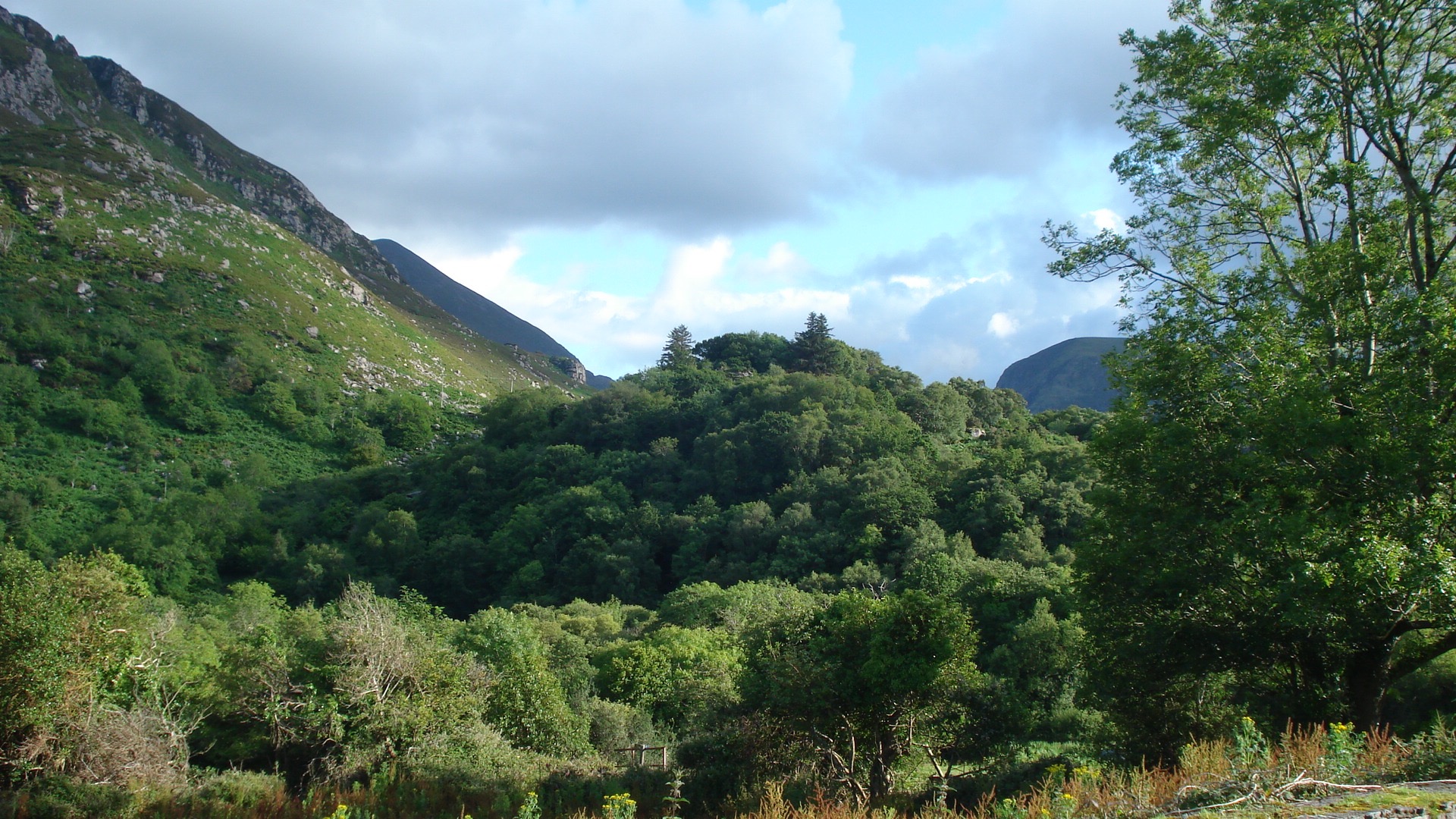

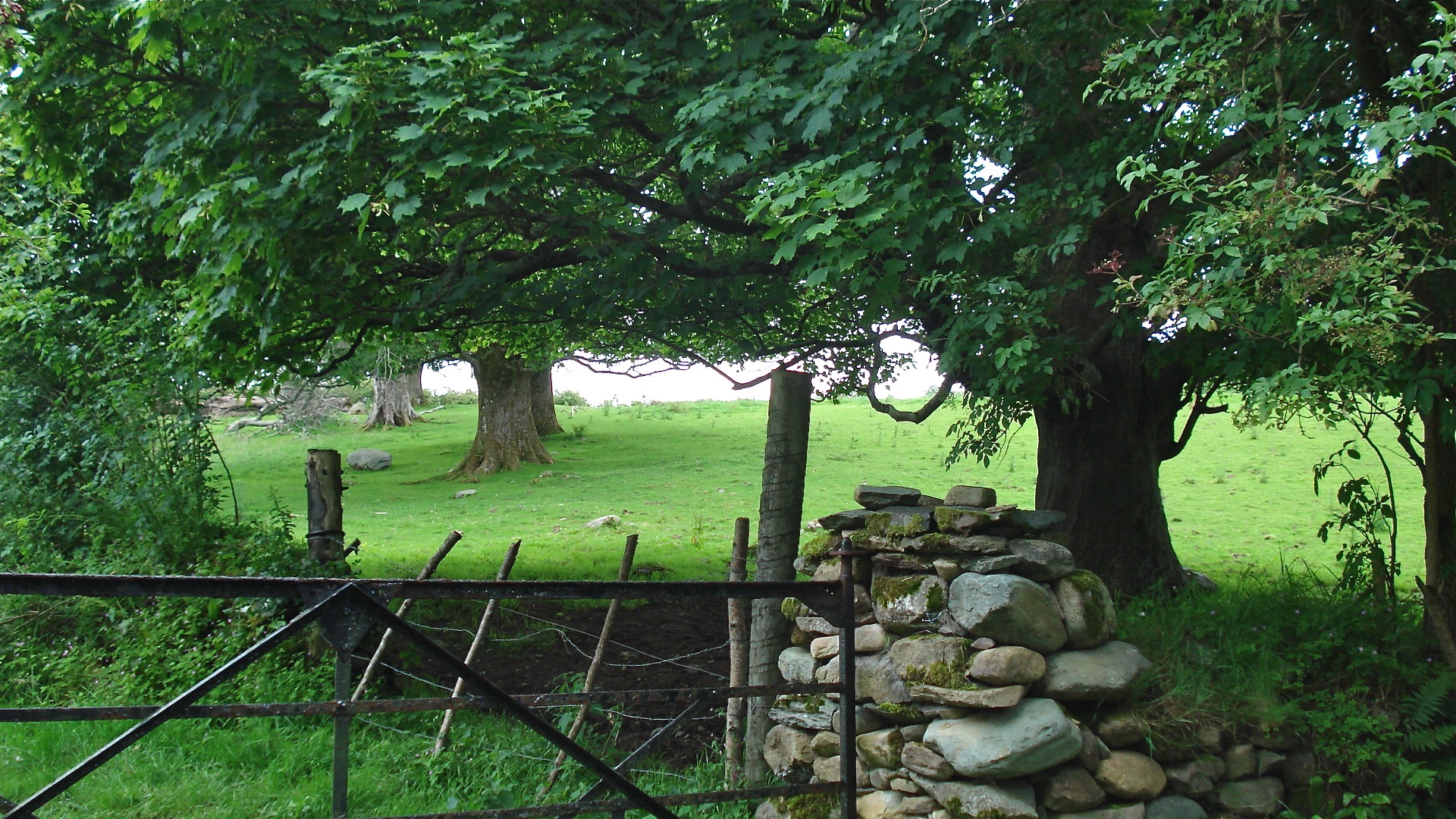
On Friday, we got our nerve back and decided to tackle the narrow roads of the Ring of Kerry, that famous loop around the jut of land just south of the Dingle peninsula. We got an early start to try to avoid the bus people and decided to travel the same, counter-clockwise direction that the buses travel so that, despite slower going, we wouldn’t have to encounter them traveling the opposite direction.
Did I mention that the Irish have a lot of sheep? Many sheep, flocks of sheep. In fact, after we returned from our trip, we learned that Beth's ancestors on her paternal grandmother's side came from County Galway and were sheepherders. Now that may not have been a prestigious occupation back in the day, but we thought it was way cool, perhaps only surpassed by having the occupation of being a breeder of Irish Wolf Hounds. We stopped at a sheep farm on a bluff close to the small town of Kells. They gave herding dog demonstrations with their prize winning boarder collies. Despite the fact that a bus pulled up with its horde right at the time of the demonstration, we loved it. The dogs were superb; the sheep were great; the shepherd was funny; and the bus people were from Germany, and so we heard the German translation and even corrected a few things for them. Luckily all in our family understand German, at least to a passable degree. Afterwards we drove into Cahersiveen for a snack at a French bakery—great pastries and great town.
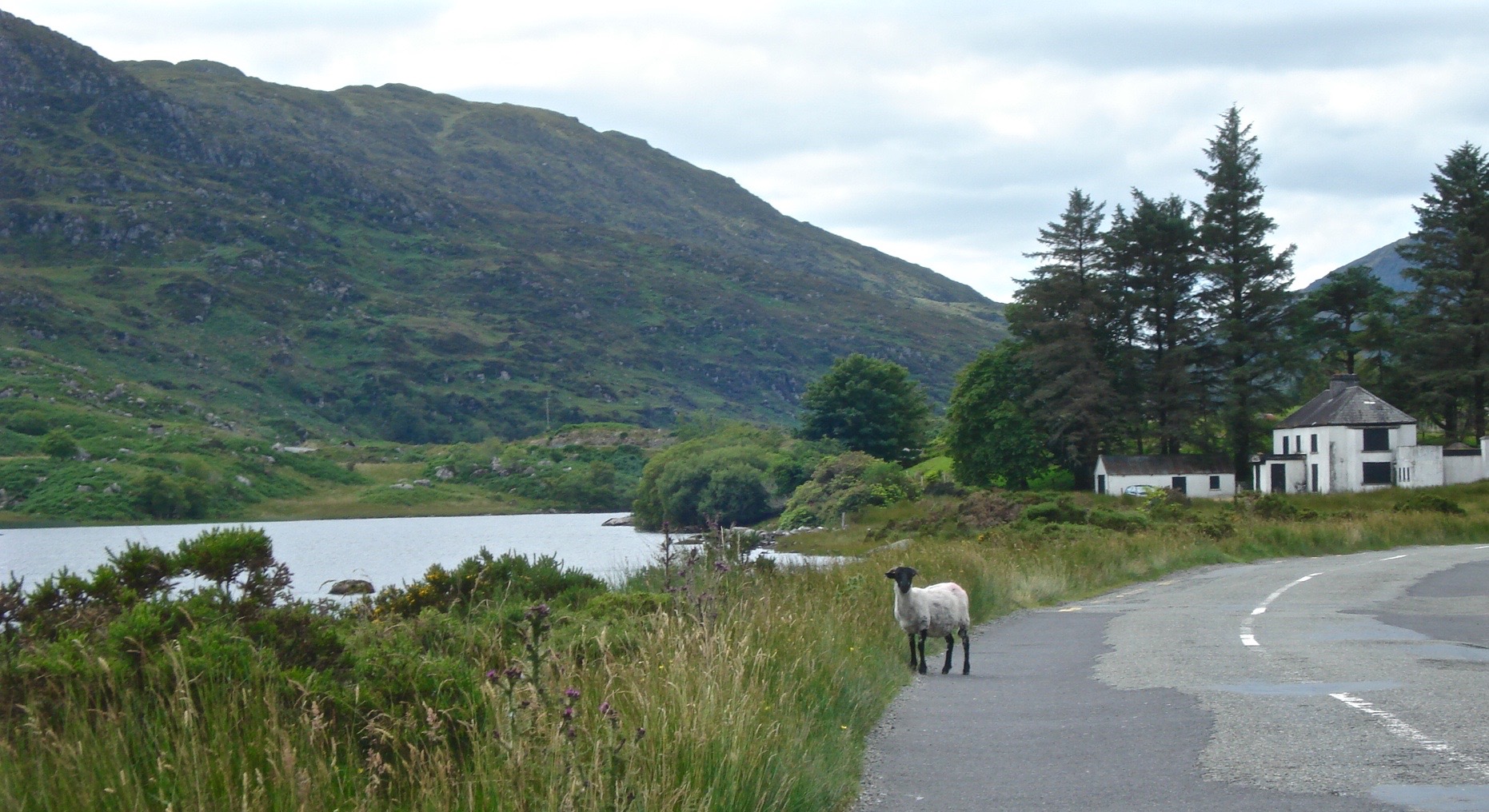

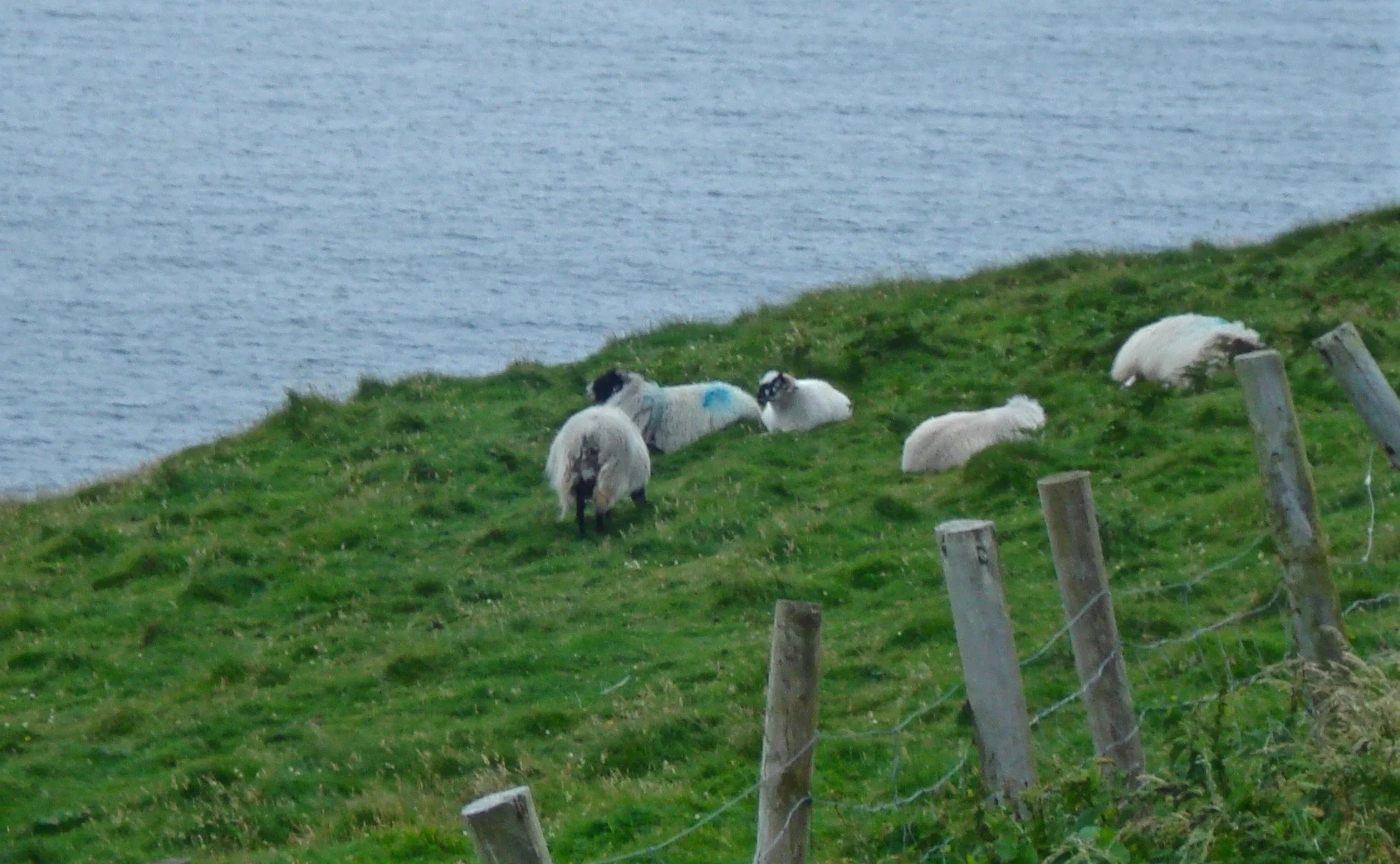
We then drove onto Valencia Island on the western tip of the Ring of Kerry and saw some isolated and hauntingly beautiful farms overlooking the western cliffs on the sea. In effect, Ethan and John were able to lie in the grass and look over the western edge of Europe. Did you know that, along the coasts, Ireland has palm trees, well actually Palmettos according to our biology-oriented son, John. The warm currents make it possible. Now, would it be the Ring of Kerry where Beth wanted to live? As beautiful as it was, she stuck with Dingle. We stopped in Waterville to have a late lunch and then returned home, stopping at the colorful town of Sneem, but meeting more bus people. I thought, “Wouldn’t it be cool if Smee from Peter Pan had actually come from Sneem, and he could say, ‘I’m Smee from Sneem.’”
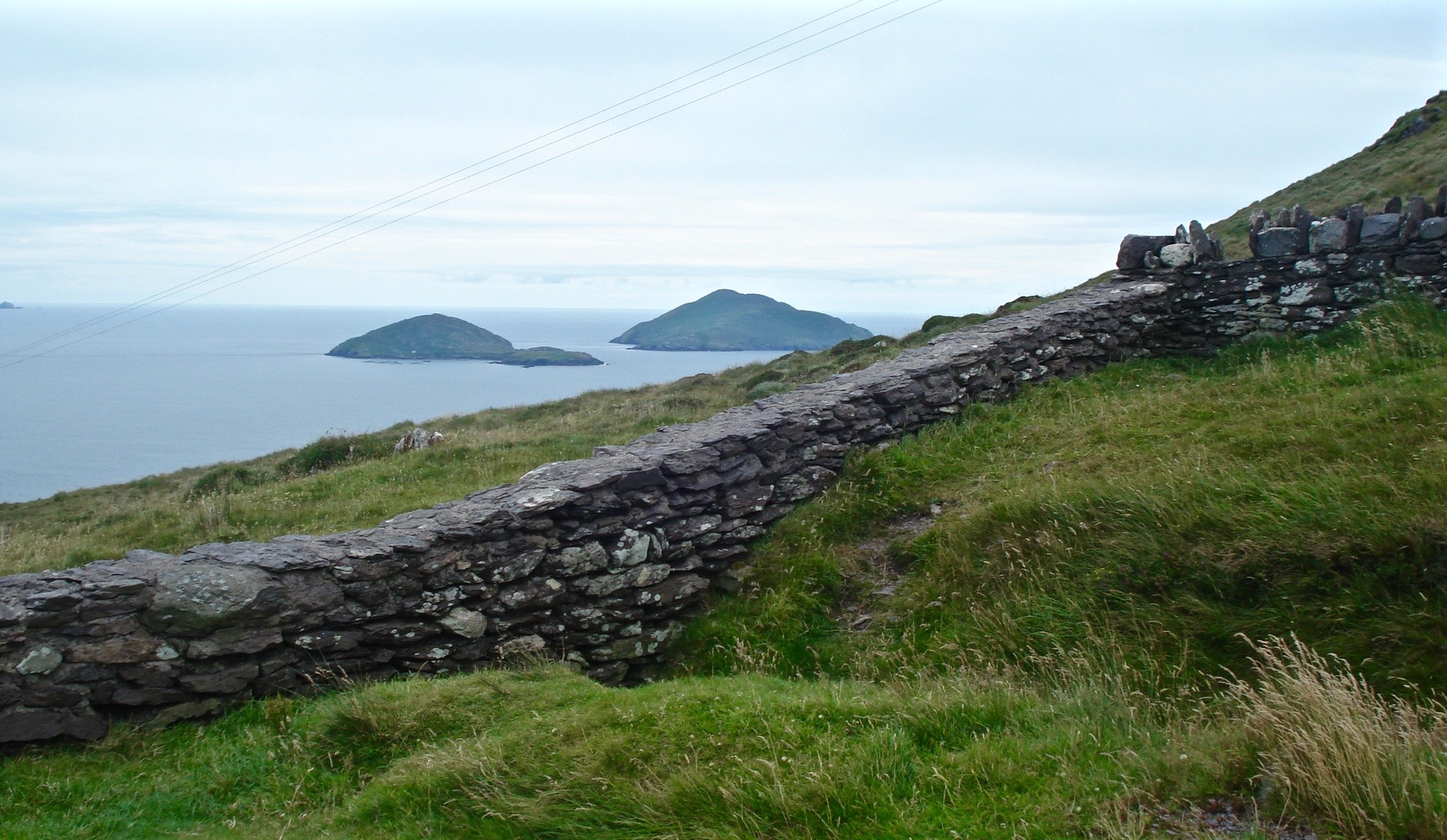
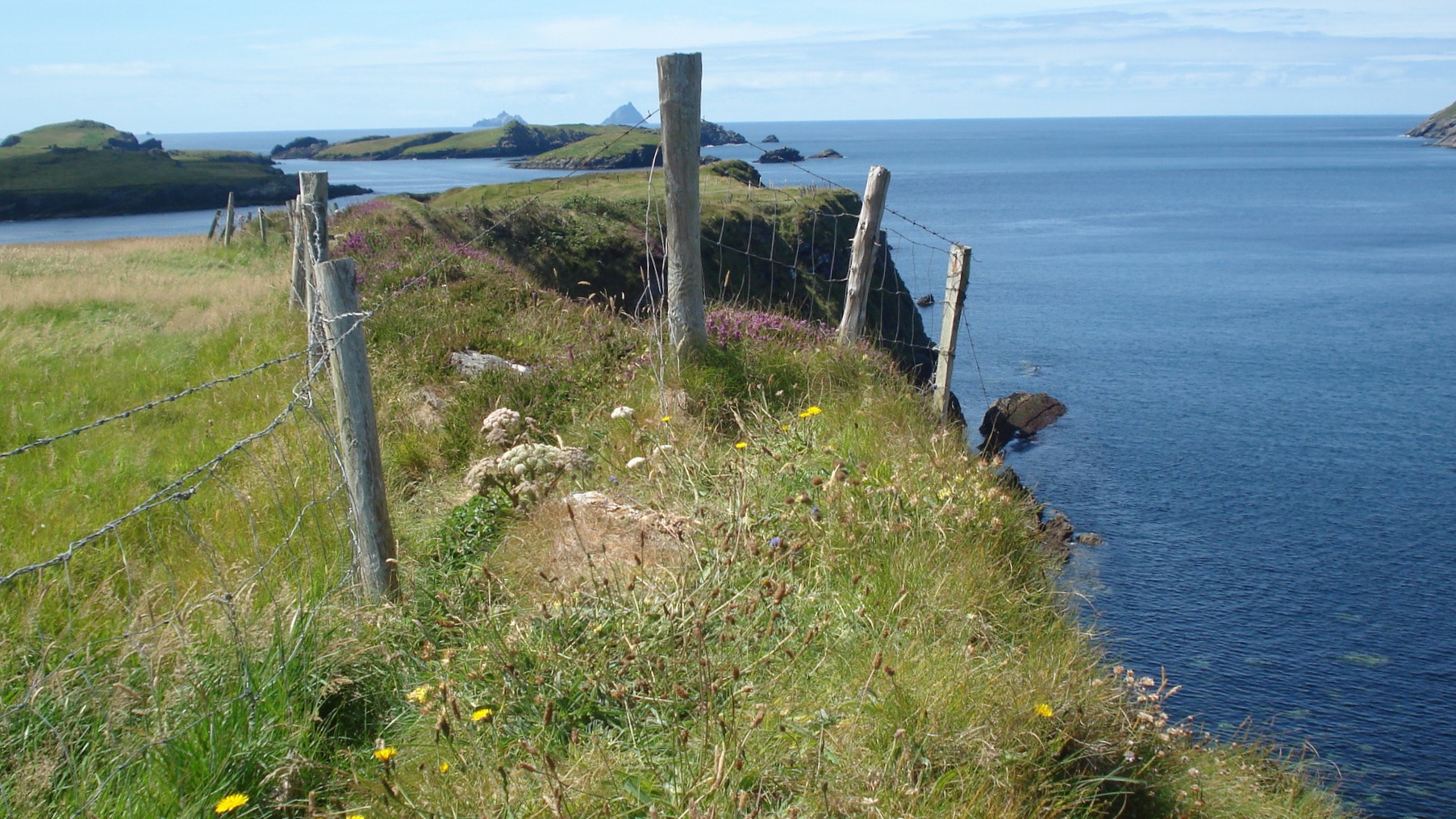
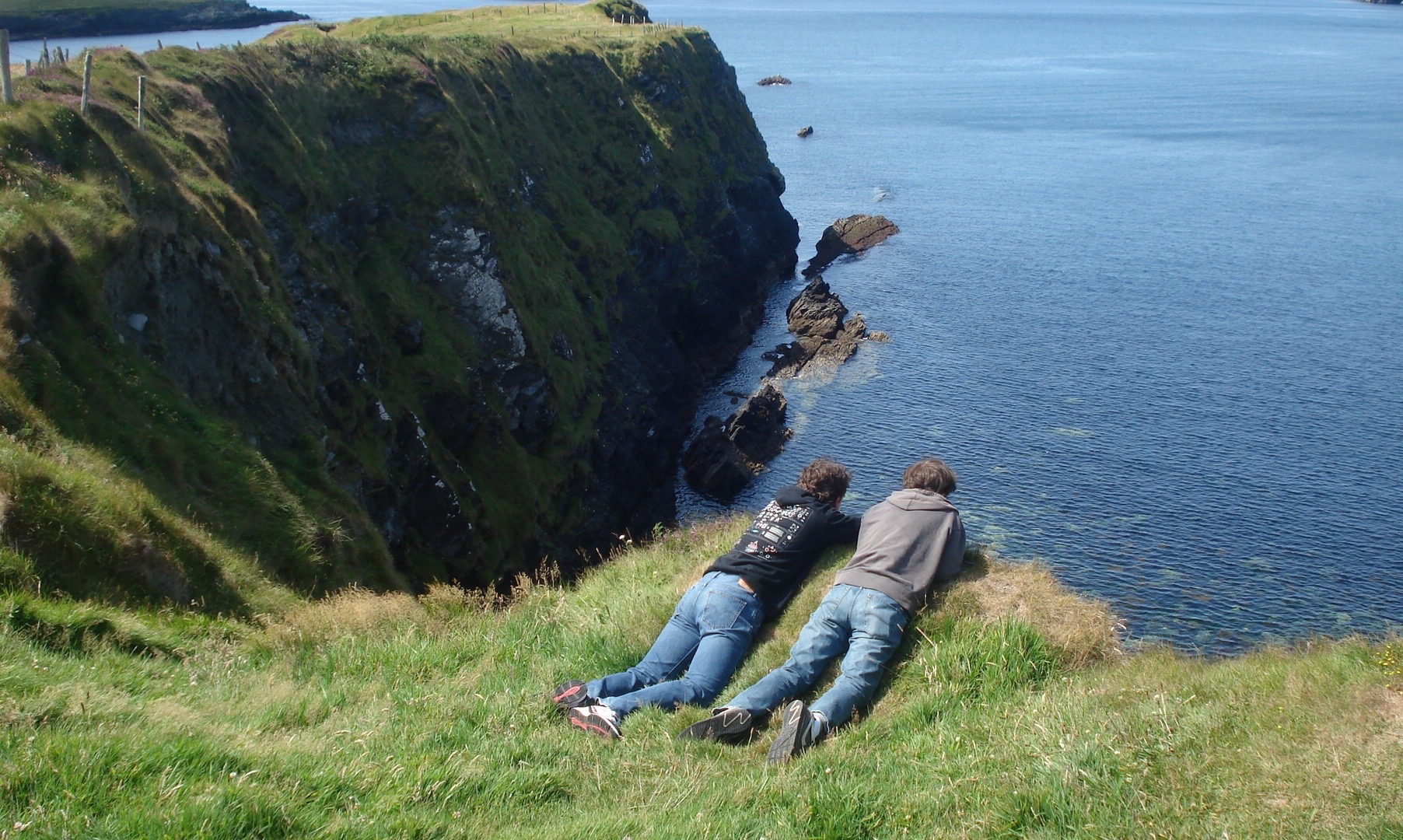
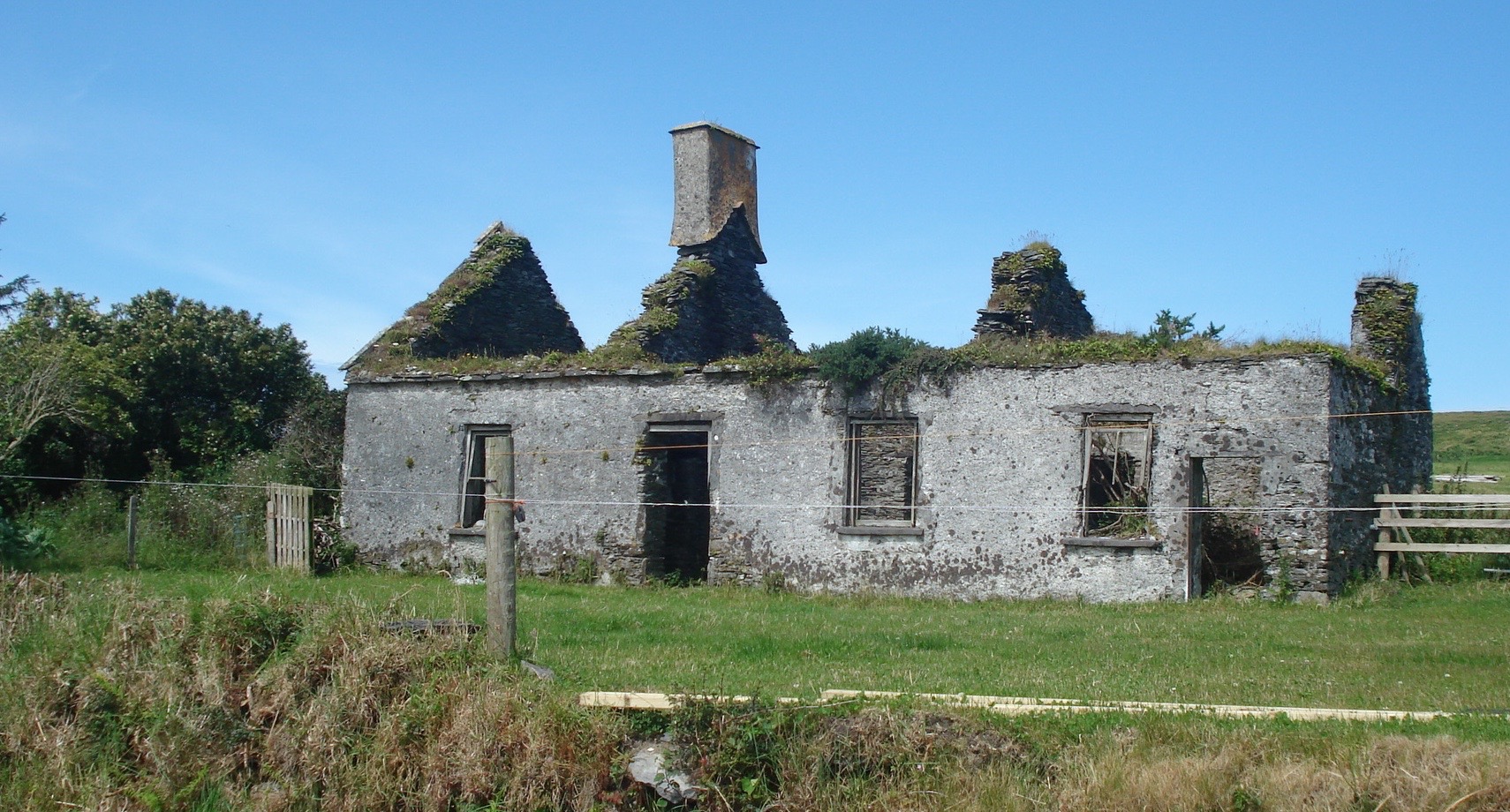
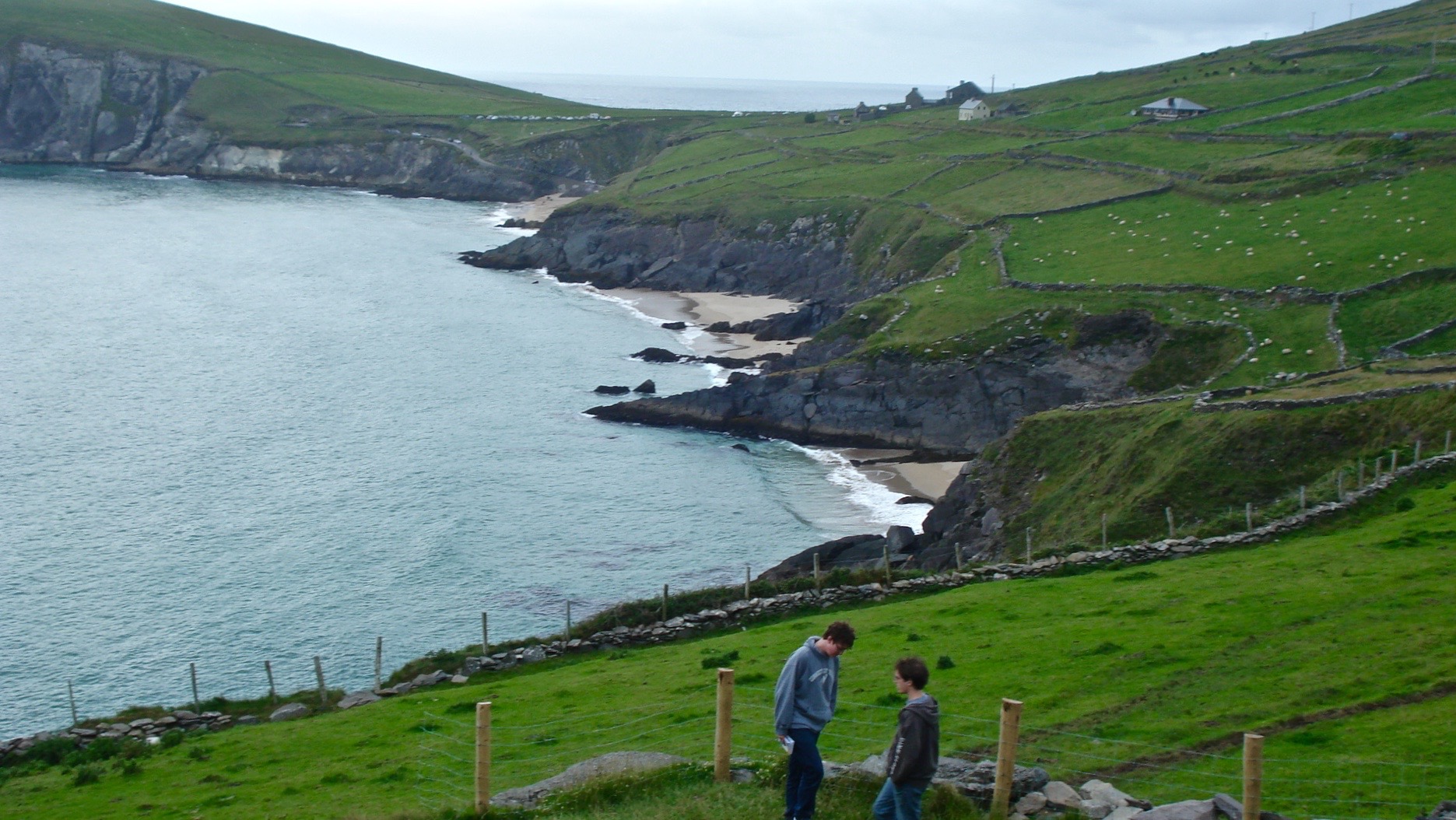

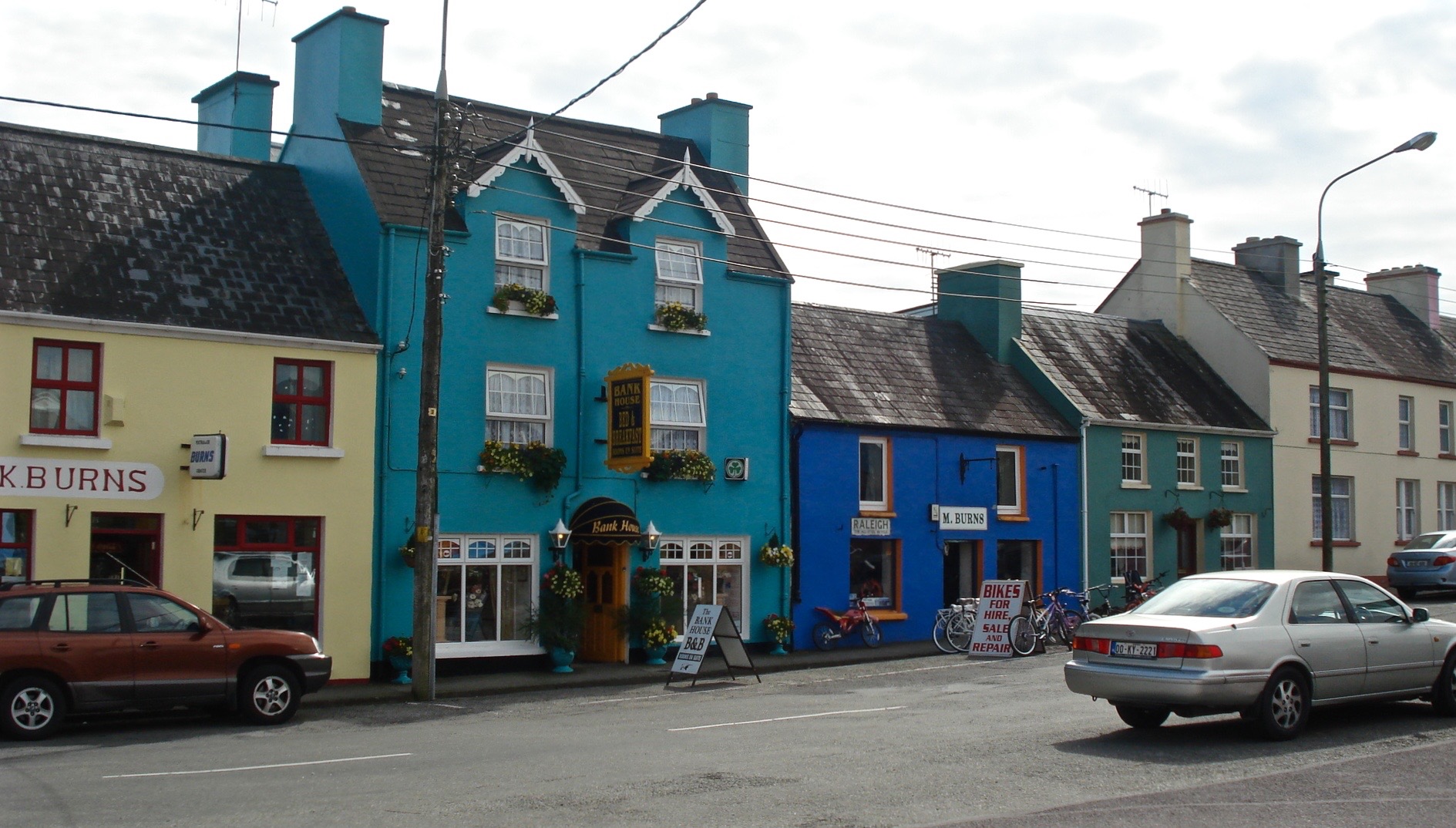
On Saturday, we made a beeline to Dublin (through the delightful town of Adare and skirting Limerick). For the first time, we were on the Irish equivalent of Interstate
highways. As we passed Limerick, we tried our hand at the poetic tradition. For example:
On our drive down the road from Dingle,
We saw sights that made us tingle,
But on a path too narrow,
We passed an SFB type of fellow,
And put on our car a new wrinkle.
Dublin. A big, bustling city cut in two by the River Liffey (or as Beth’s father had called it, "The Whiffy Liffey”—don’t drink the water). We walked around, saw some sights, spent time in the lively Temple Bar area, ran into a Zombie convention, and ended the evening seeing the latest and last Harry Potter movie.
On Sunday we got up early and beat the crowds at Trinity College to see the old library and the Book of Kells—that early masterpiece of art and book making by thehands of the medieval monks of Ireland. The library, with its long and tall, narrow hall and rows and layers of old books, was a wonderful sight. No photography was allowed, but I have included a poem written by a ninth-century monk from those times:
I and Pangur Ban my cat
‘Tis a like task we are at:
Hunting mice is his delight,
Hunting words I sit all night.
Better far than praise of men
‘Tis to sit with book and pen;
Pangur bears me no ill will
He too plies his simple skill.
Oftentimes a mouse will stray
In the hero Pangur’s way;
Oftentimes my keen thought set
Takes a meaning in its net.
‘Gainst the wall he sets his eye
Full and fierce and sharp and sly;
‘Gainst the wall of knowledge I
all my little wisdom try.
Practice every day has made
Pangur perfect in his trade;
I get wisdom day and night
Turning darkness into light.

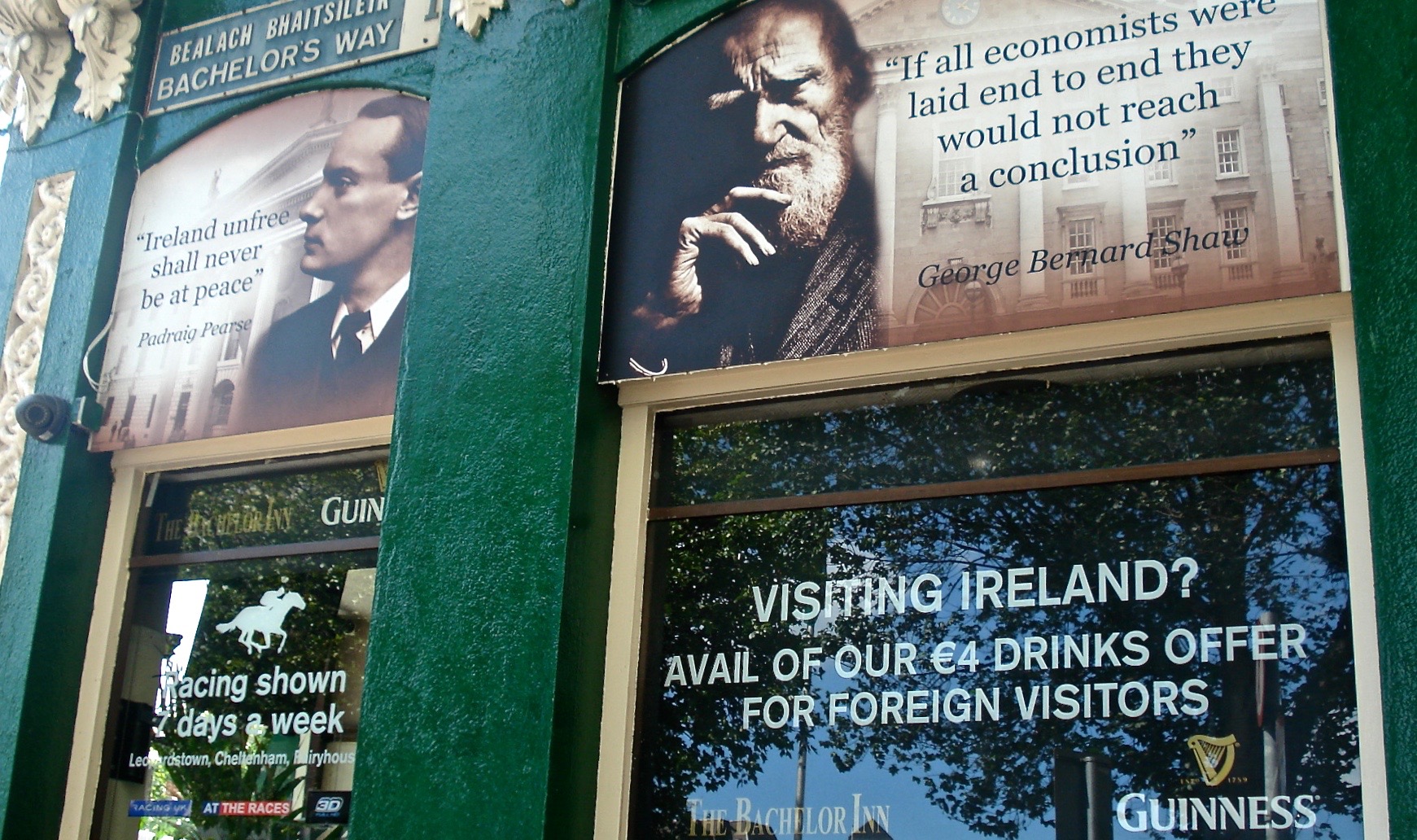
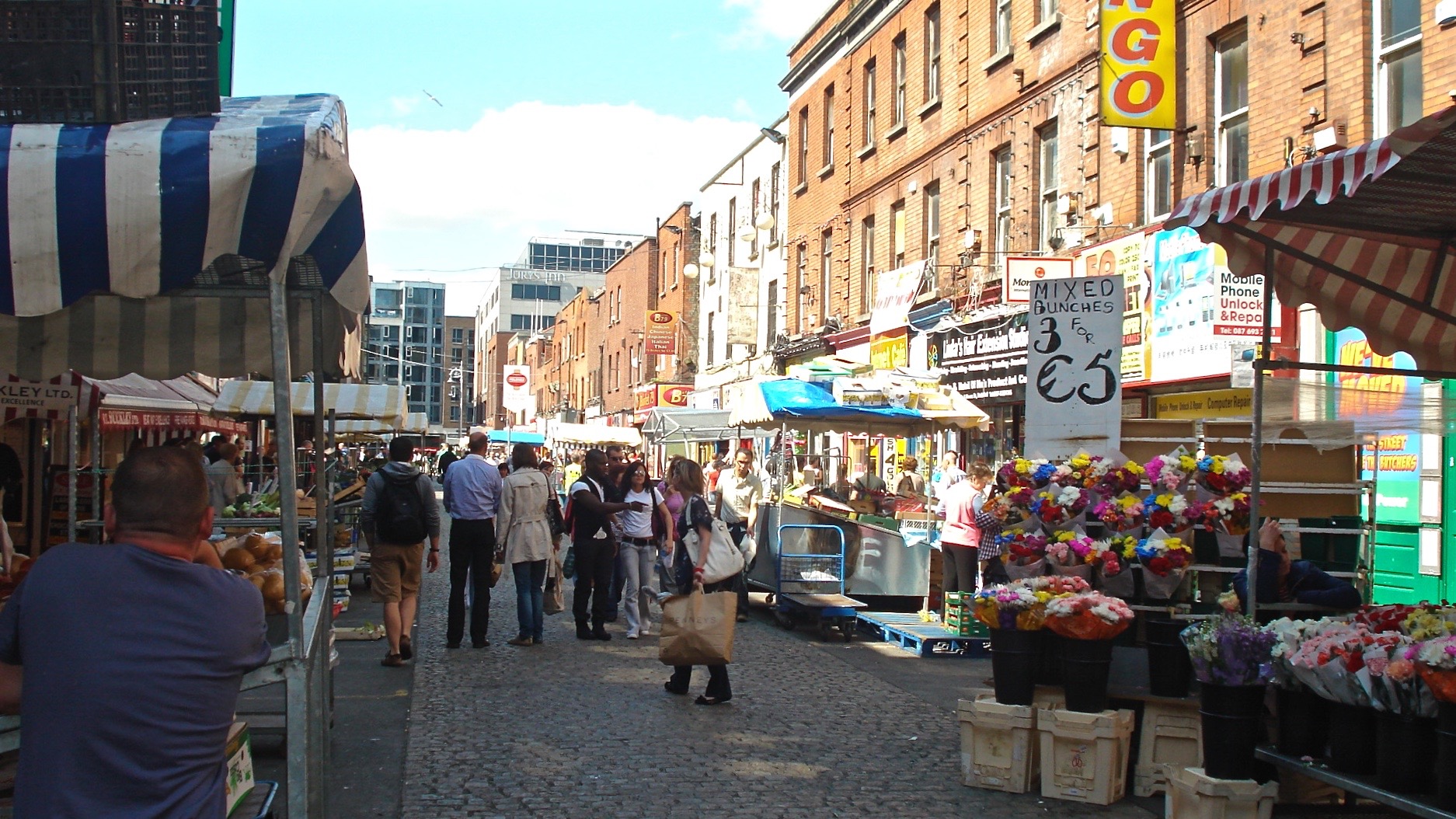
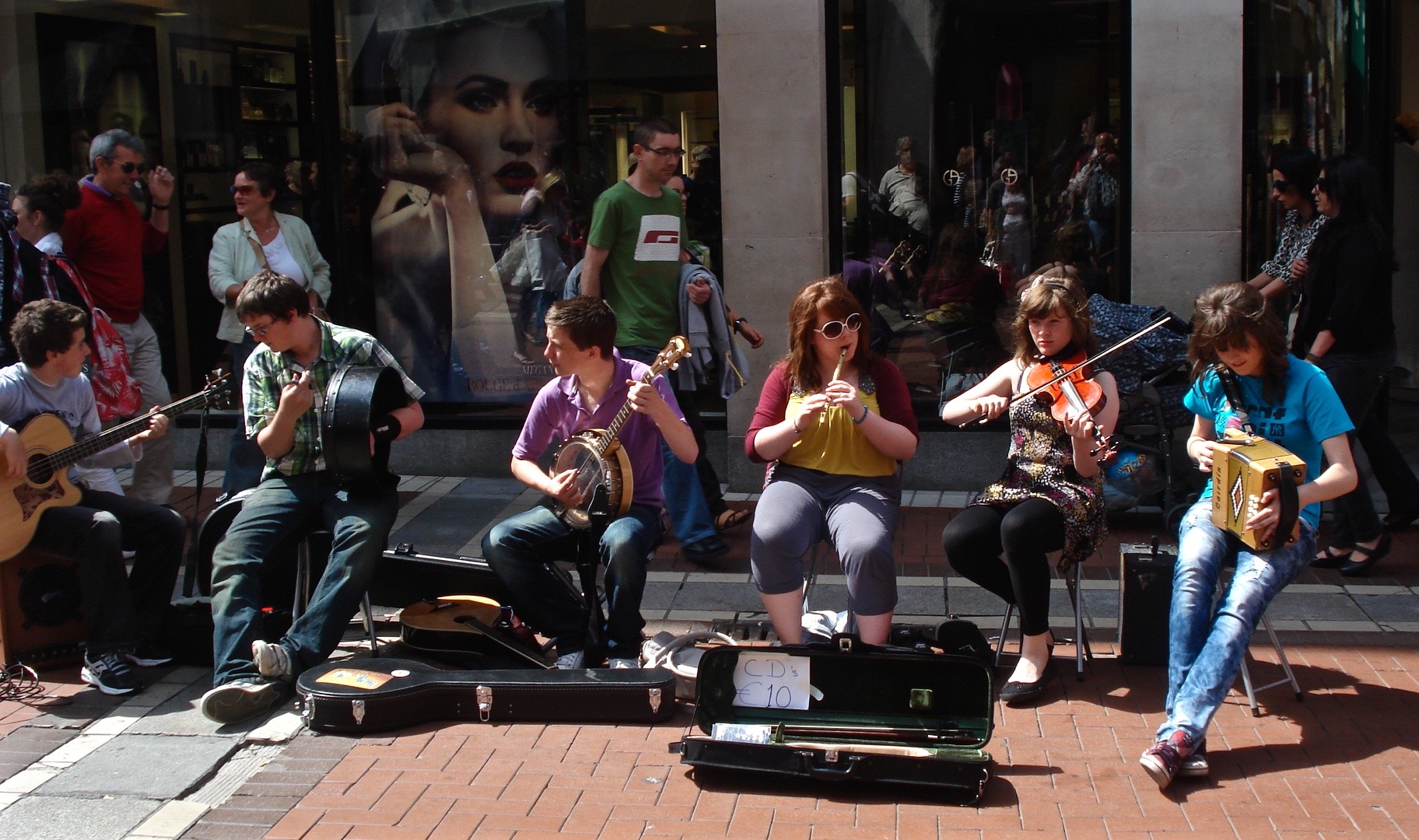
We had a late breakfast at a most wonderful restaurant and then took an on-and-off, narrated bus tour of the city. We got off at the Guinness Brewery and toured it and learned how to make beer. Then we went directly from the brewery to jail, the old Kilmainham Gaol, that is. This jail is where the rebels were held from the 1916 rebellion in Dublin (in which folks had held the main post office and some other buildings). They had been executed at the jail as well. It was interesting as part of the history of Ireland and its striving for independence and also as the history of jails and trends in executions, but it was a sad, depressing place.
That evening while packing to go home the next day, we discovered that we had left our passports back at the cottage in the Gap of Dunloe. Beth, in her infinite planning for security, had hid them in the kitchen—bad plan; they were pretty secure in our suitcases. What to do? We thought we would need to rent a car again and drive all night back to the cottage to pick up the passports. Fortunately, we met with an Aer Lingus representative at the airport who went out of her way to work with us for about an hour and finally found a courier who was in the County Kerry area delivering suitcases for the airline. He picked up the passports and delivered them to us about 1:30 in the morning. (Please refer to my earlier comment about the friendliness and helpfulness of the Irish.) We were saved.
So that night, the boys, who had already gone out to eat during this turmoil, stayed in their room while Beth and I got our last pub food in the Temple Bar area and listened to our last night of traditional Irish music. And so, in leaving Dublin, Beth declared that she loved it more than Paris and would rather spend extended time in Dublin than in Paris or New York or practically any place else. Wow! And this coming from a person who loves Paris and talks about living in New York. Dublin resonated with her.
Throughout the trip, Ethan regaled us with funny stories done in various accents. He is good. We heard stories from Navajos, Latinos, Russians, Germans, French, Scots, and Brits. By the end of our trip, he had down a hilarious Irish accent as well.
On Monday we flew back to Boston, but not before Beth panicked at the airport realizing she had not bought anything by Orla Kiely, her favorite Irish designer/stylist du jour. So in the duty free shops she bought some Orla Kiely perfume and a purse—a new, bird design, not yet available in the U.S. It was perfect: she could have her snooty, fashionable Orla Kiely purse, which certain people would recognize but at the same time not be able to get in Massachusetts, at least not yet.
And so ended our Irish vacation. The Emerald Isle was indeed green beyond belief, but that greenery does not come free: it never got cold; it never got hot; but it rained a lot. We loved the sheep, the cows, the beautiful Irish horses. We loved the Irish and their style. We all want to return. Would we live there if we could? No doubt about it.


